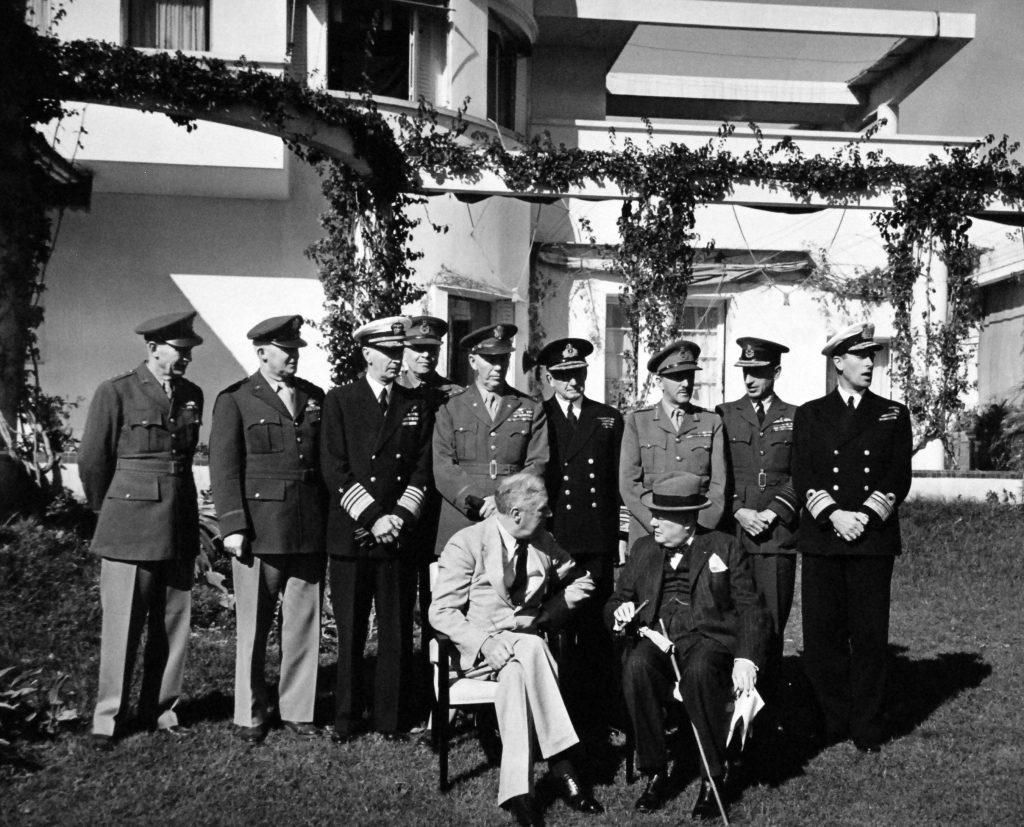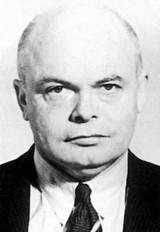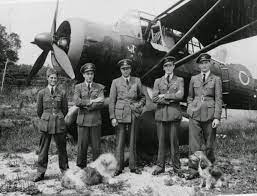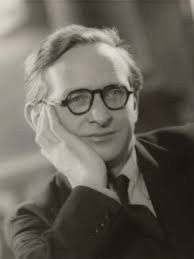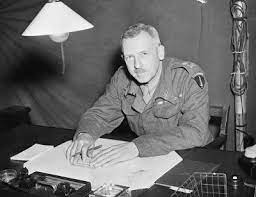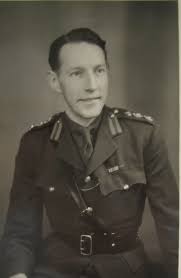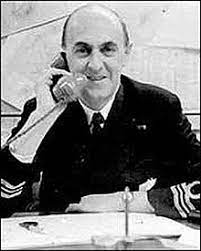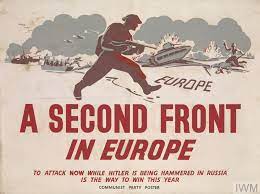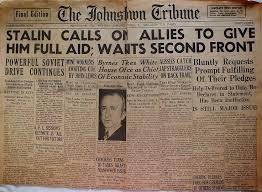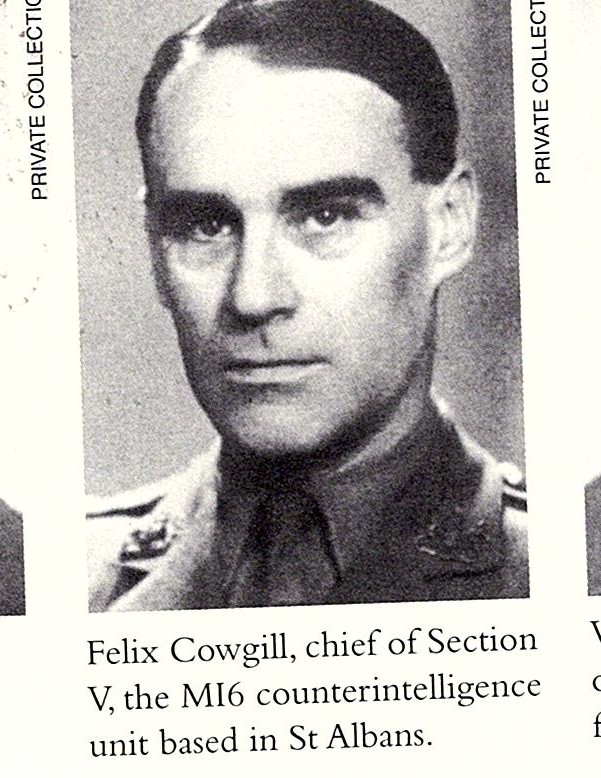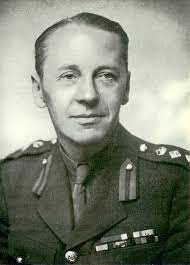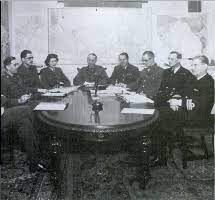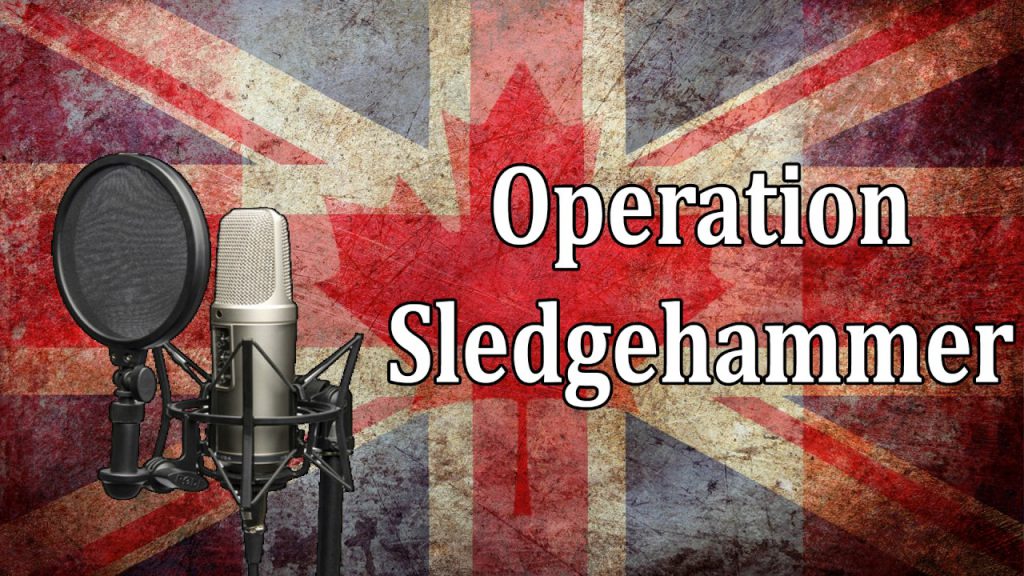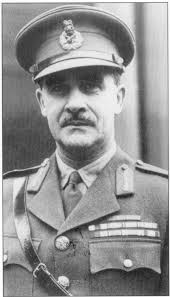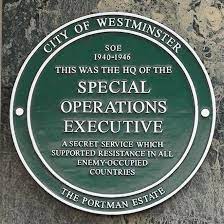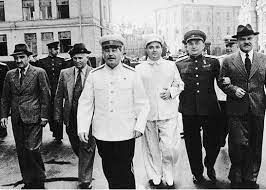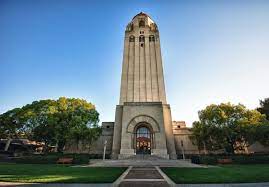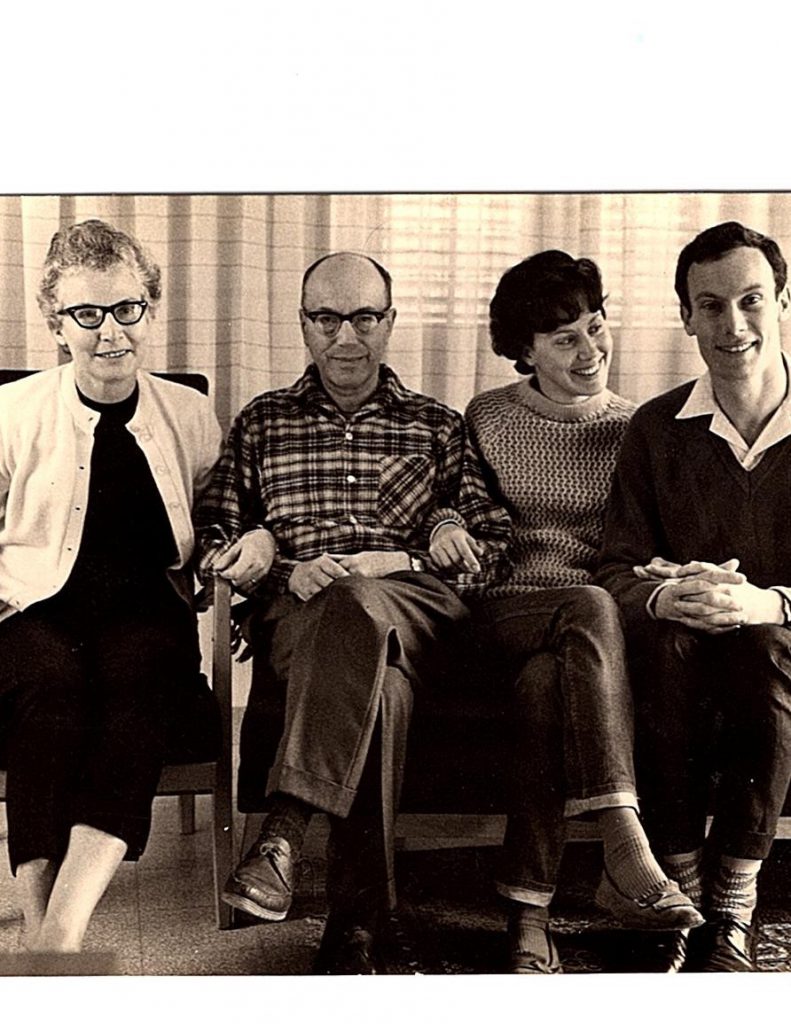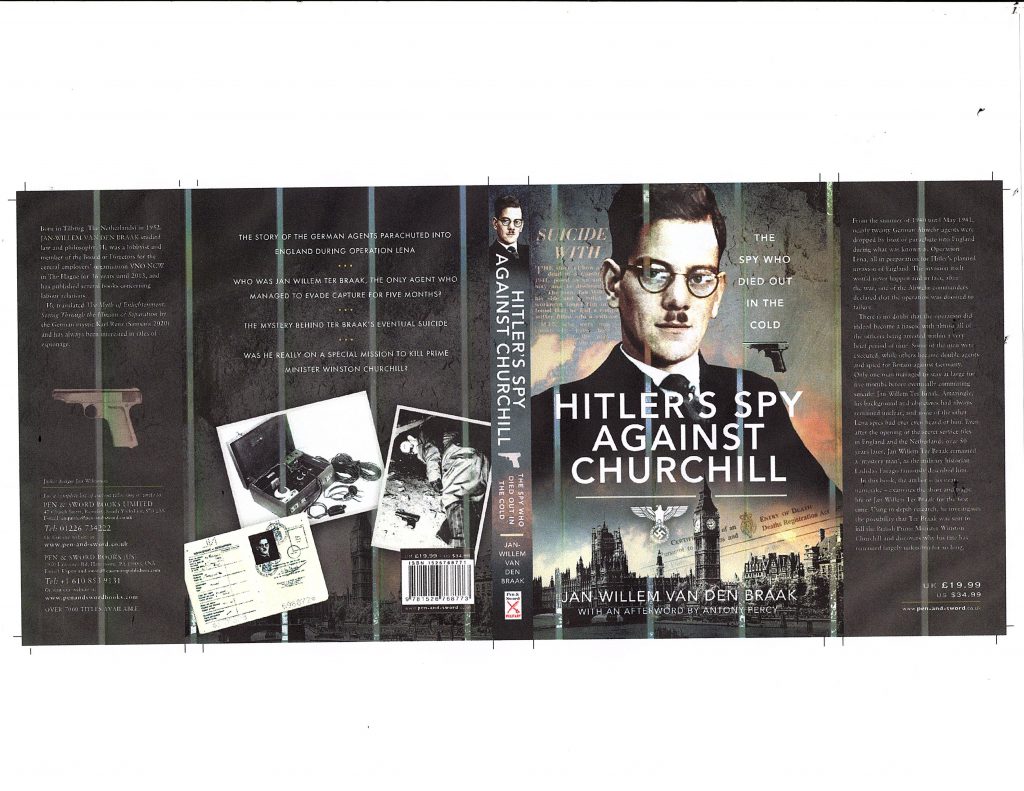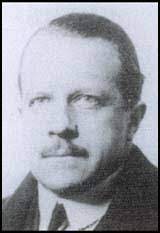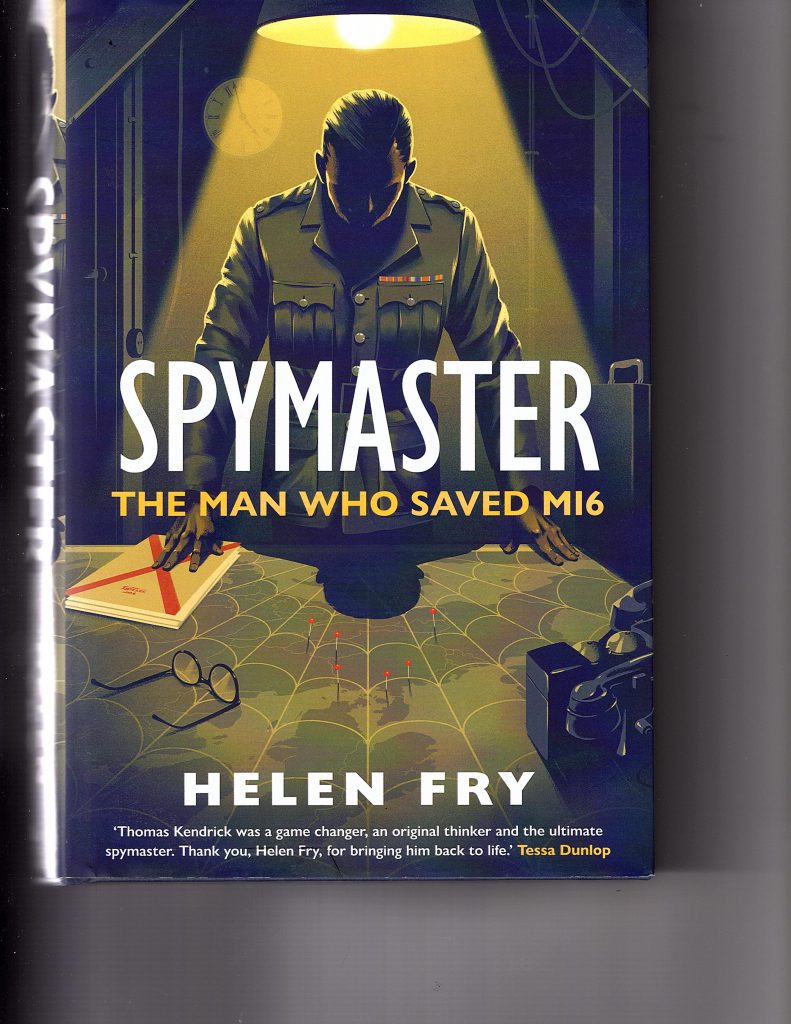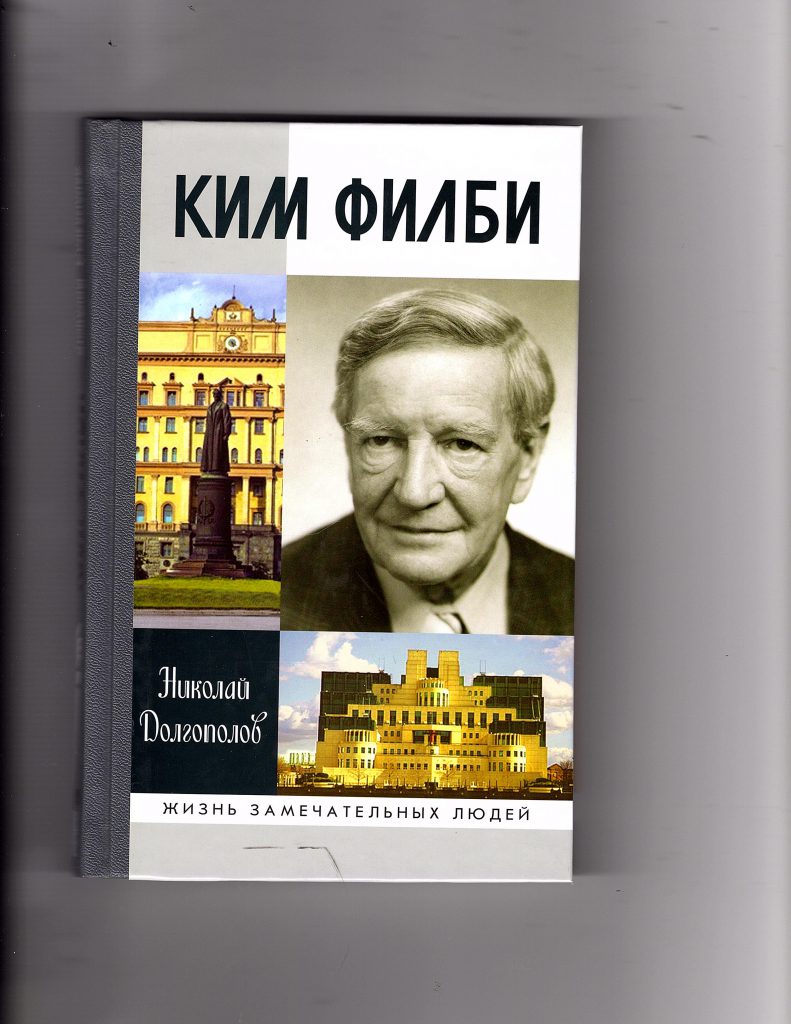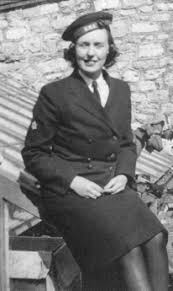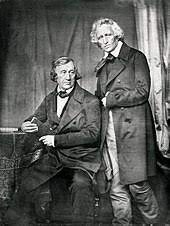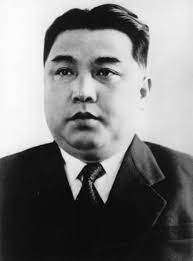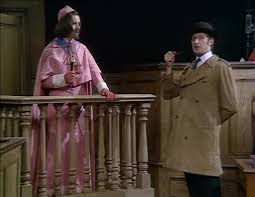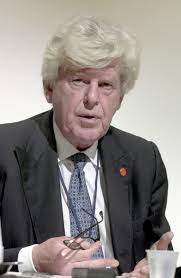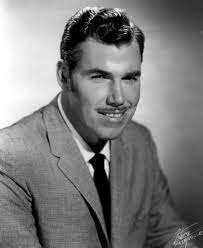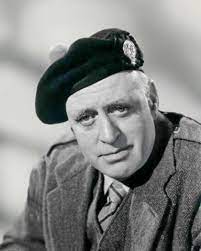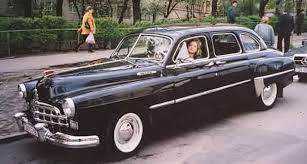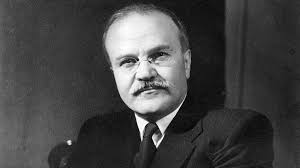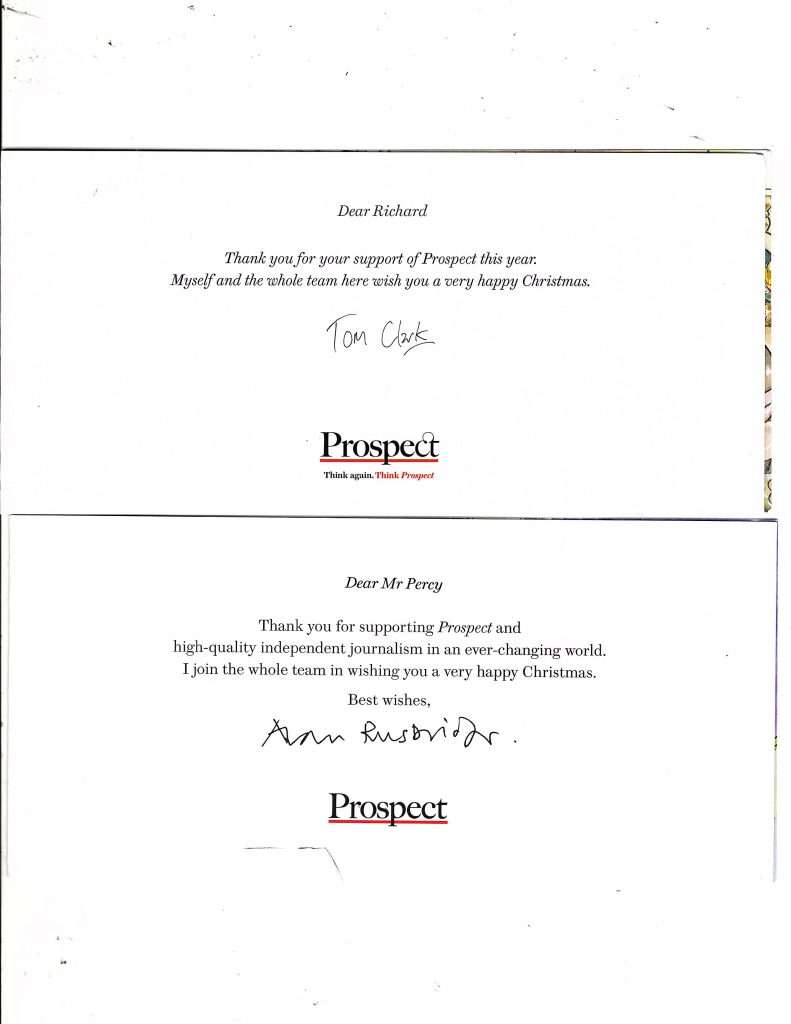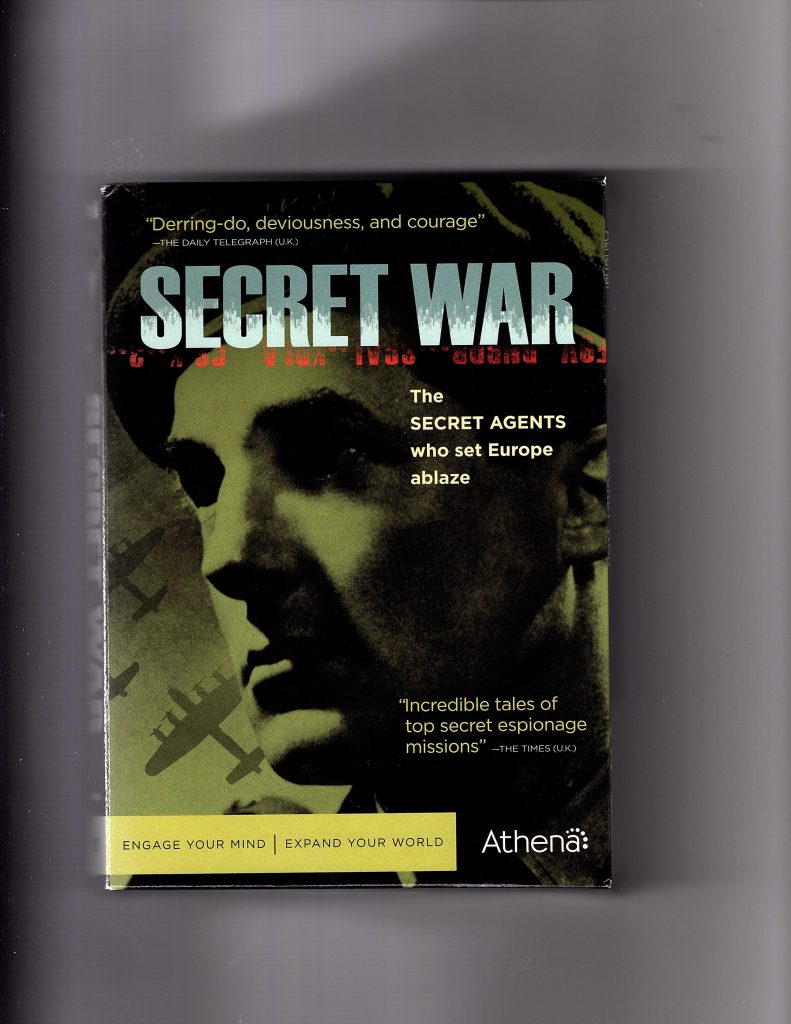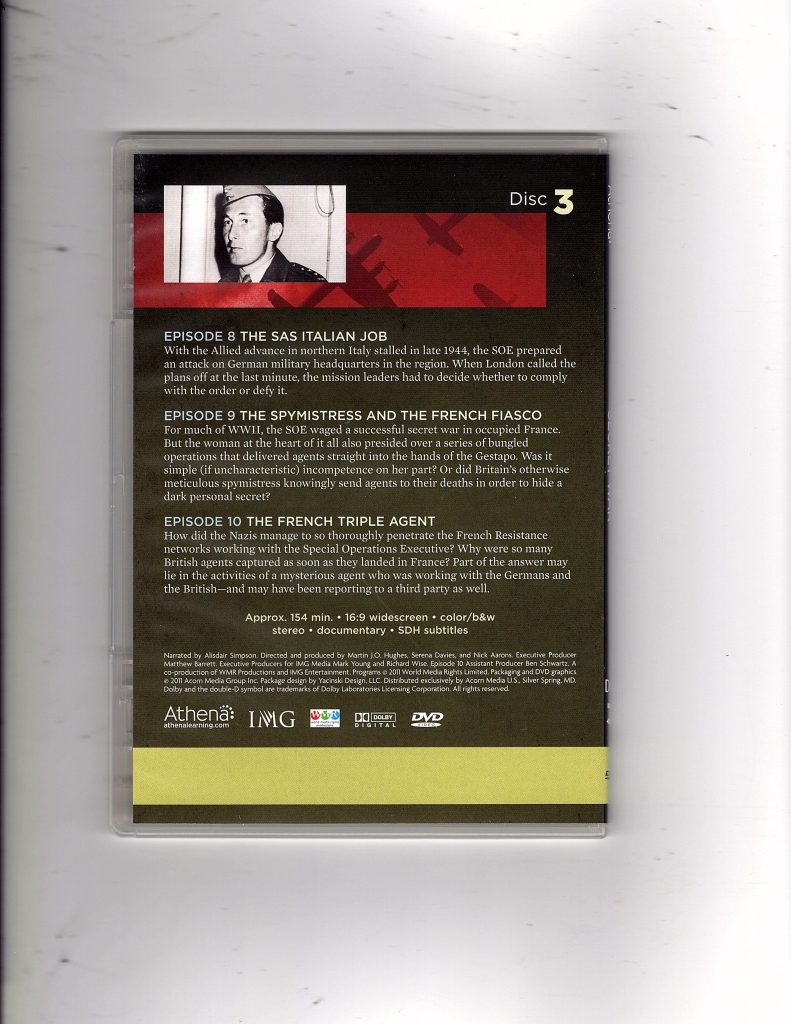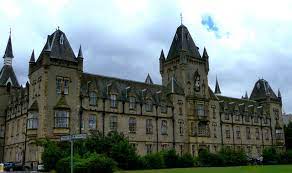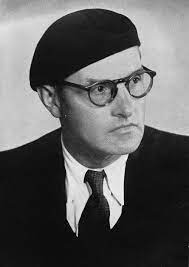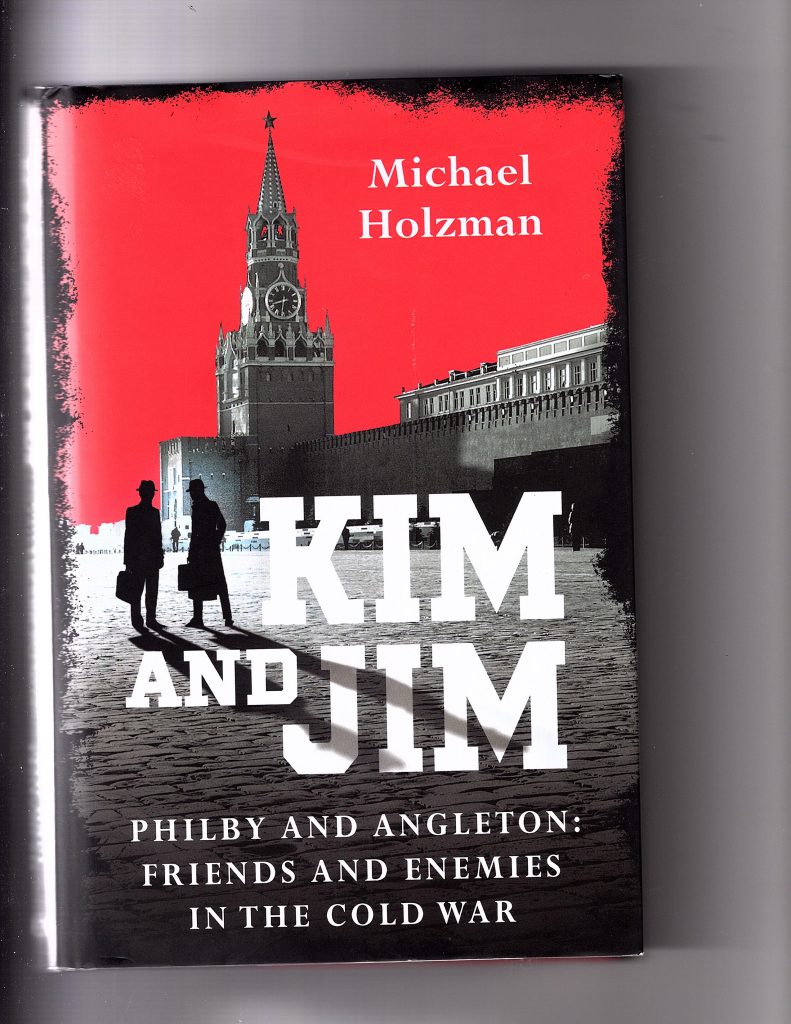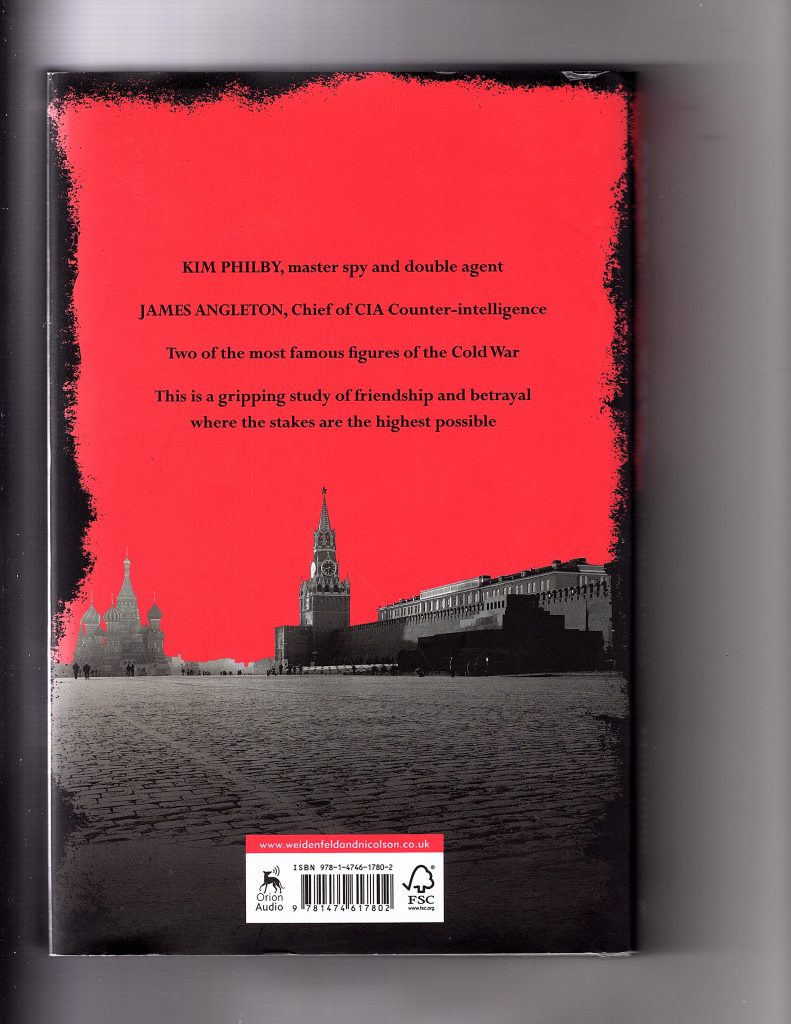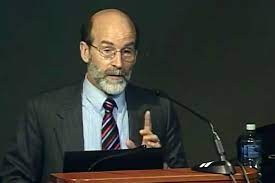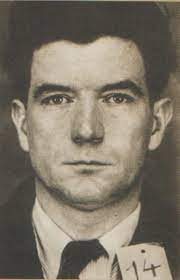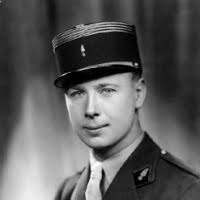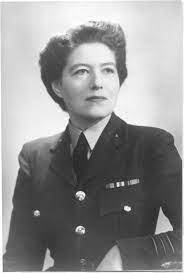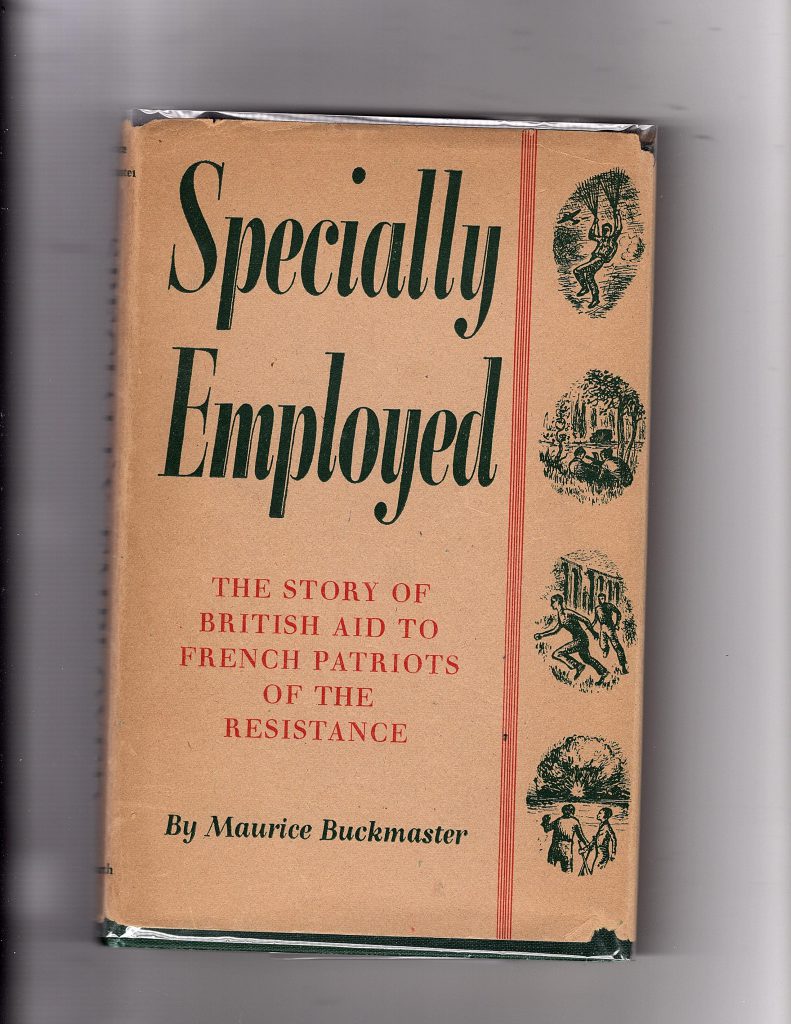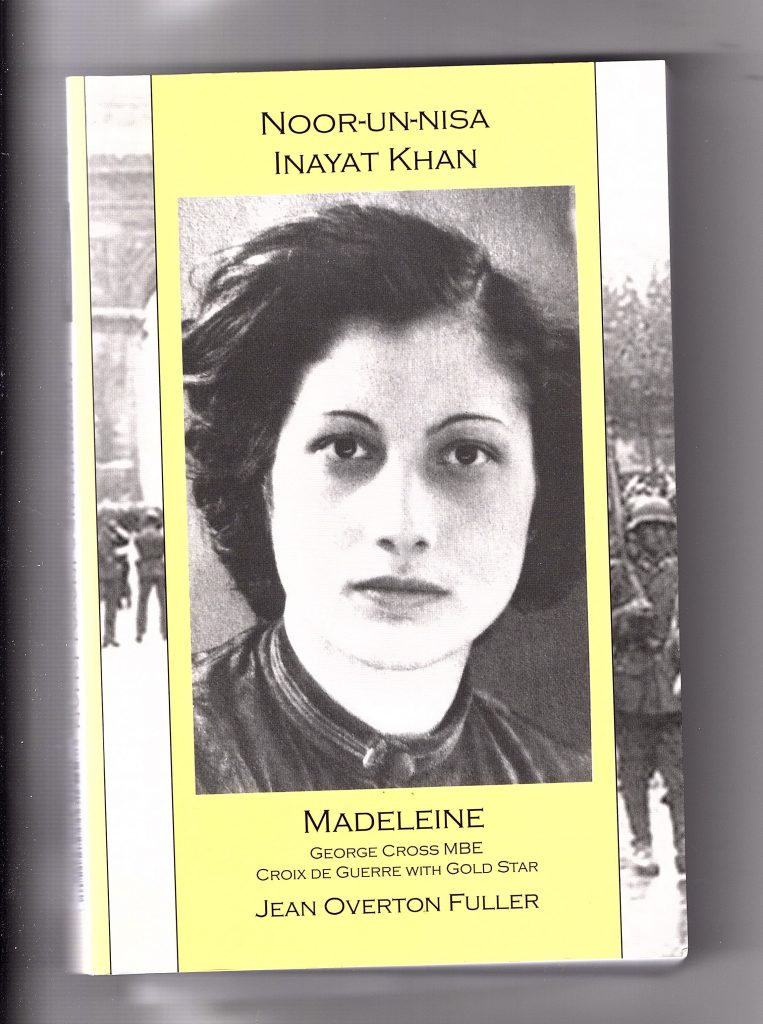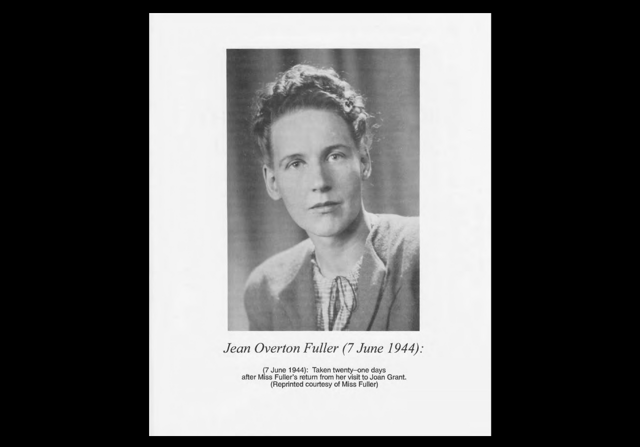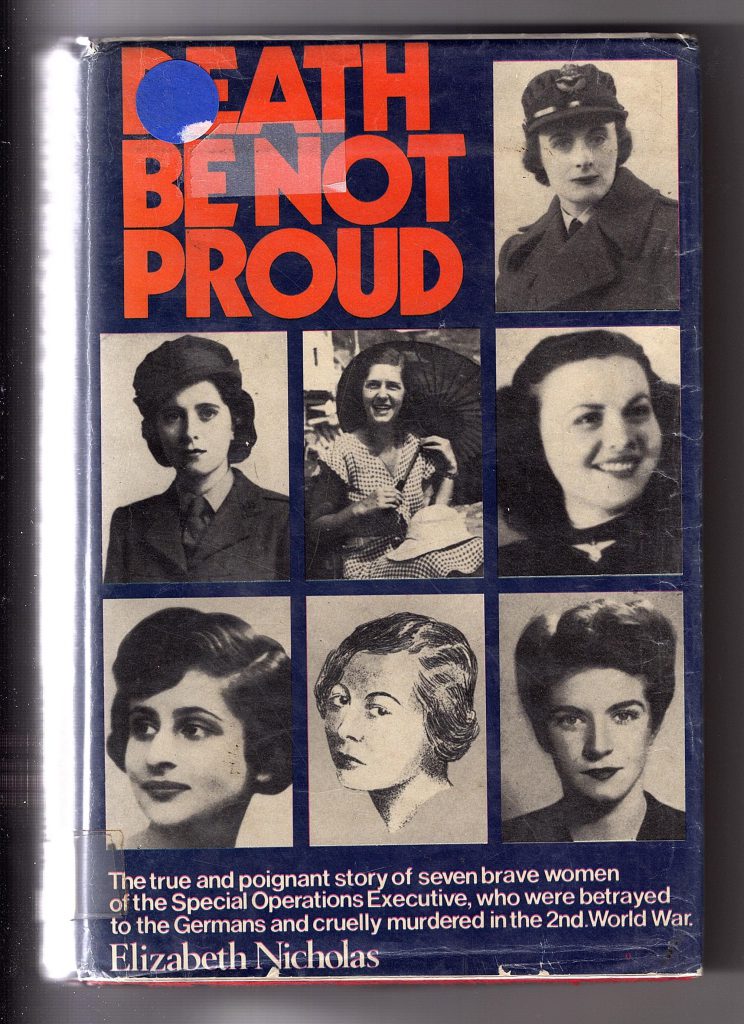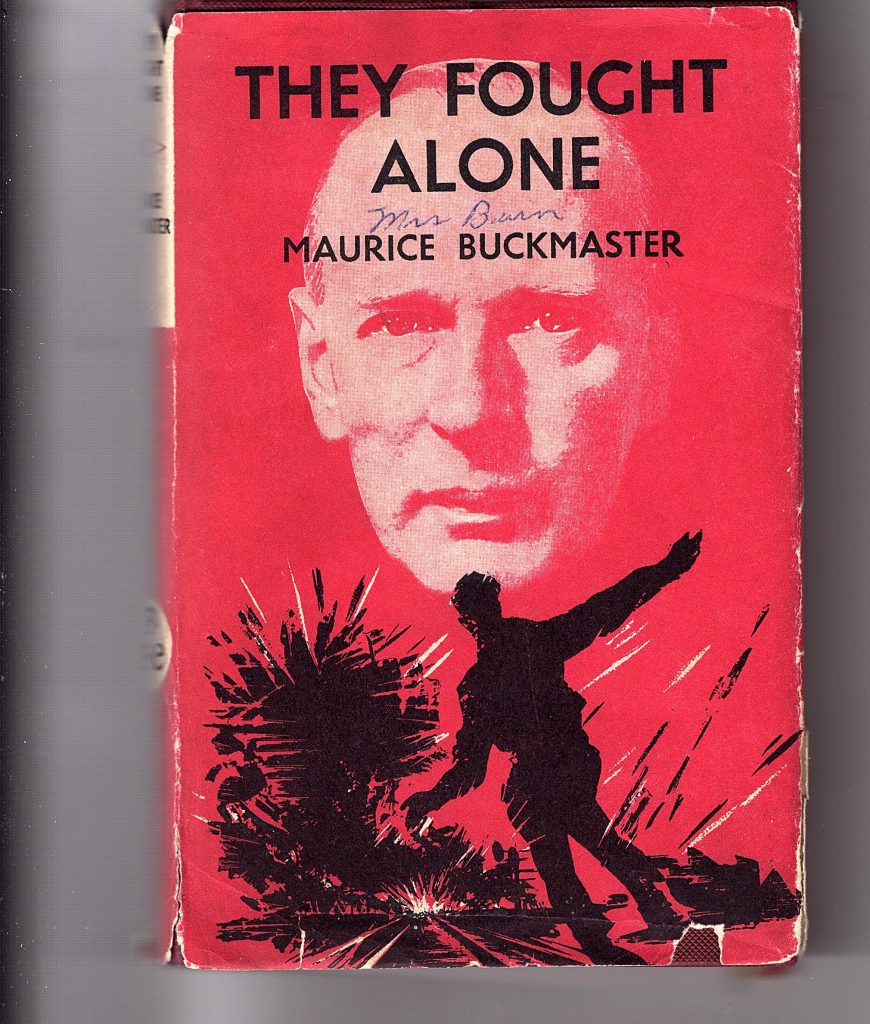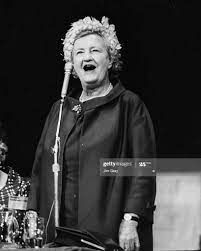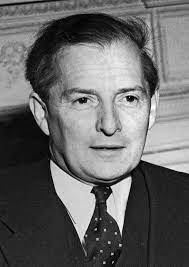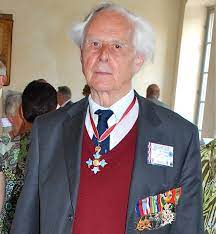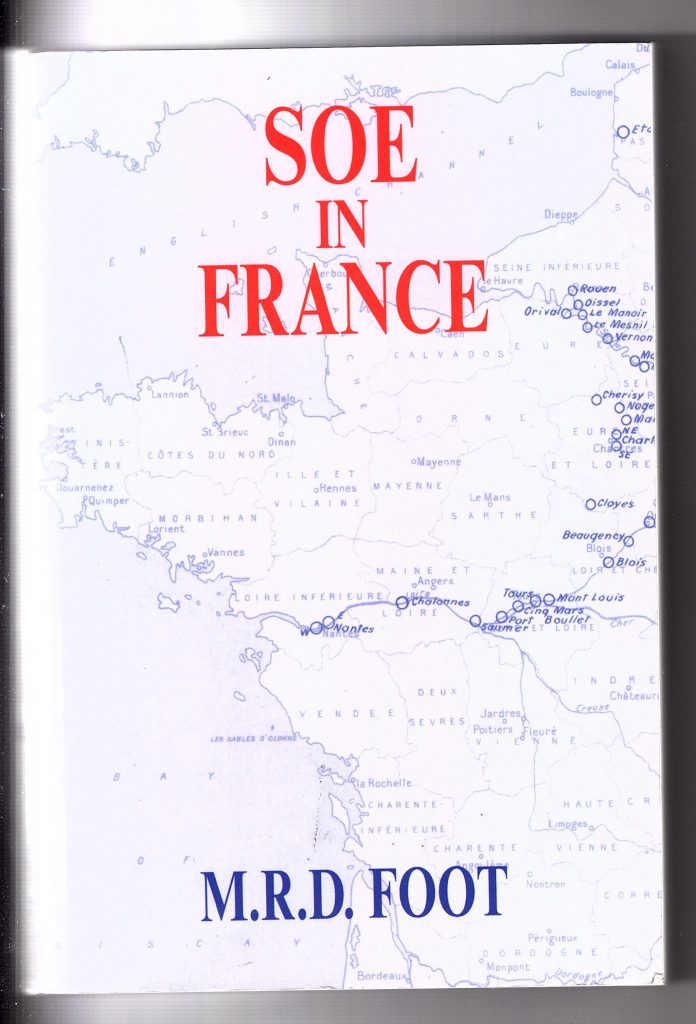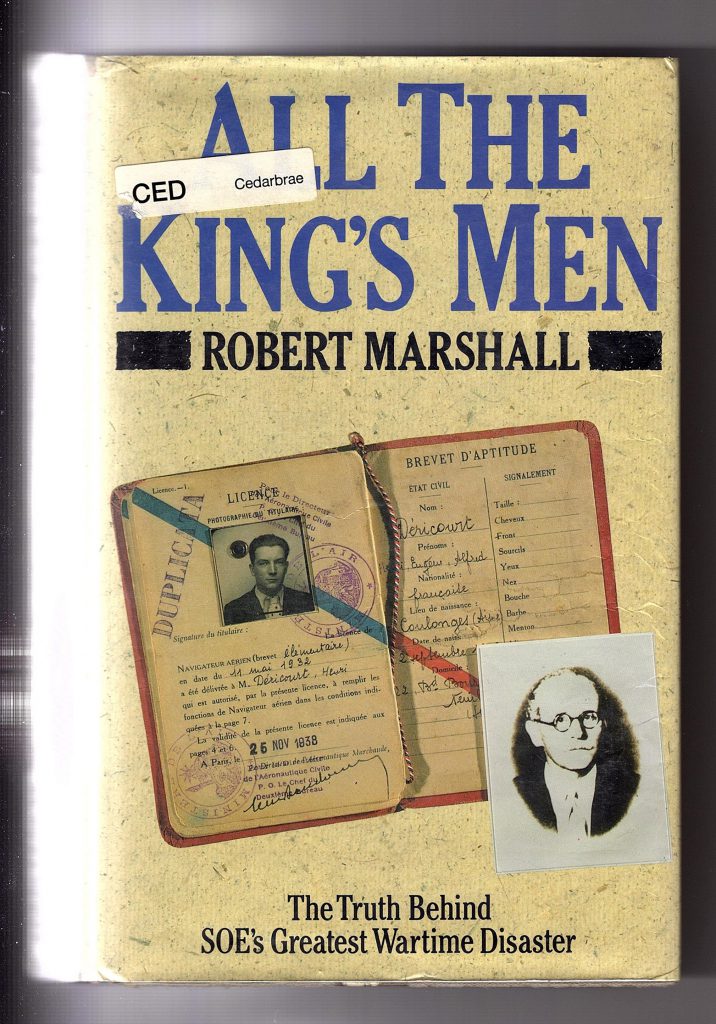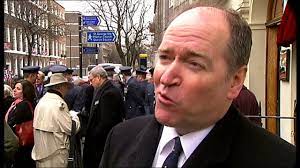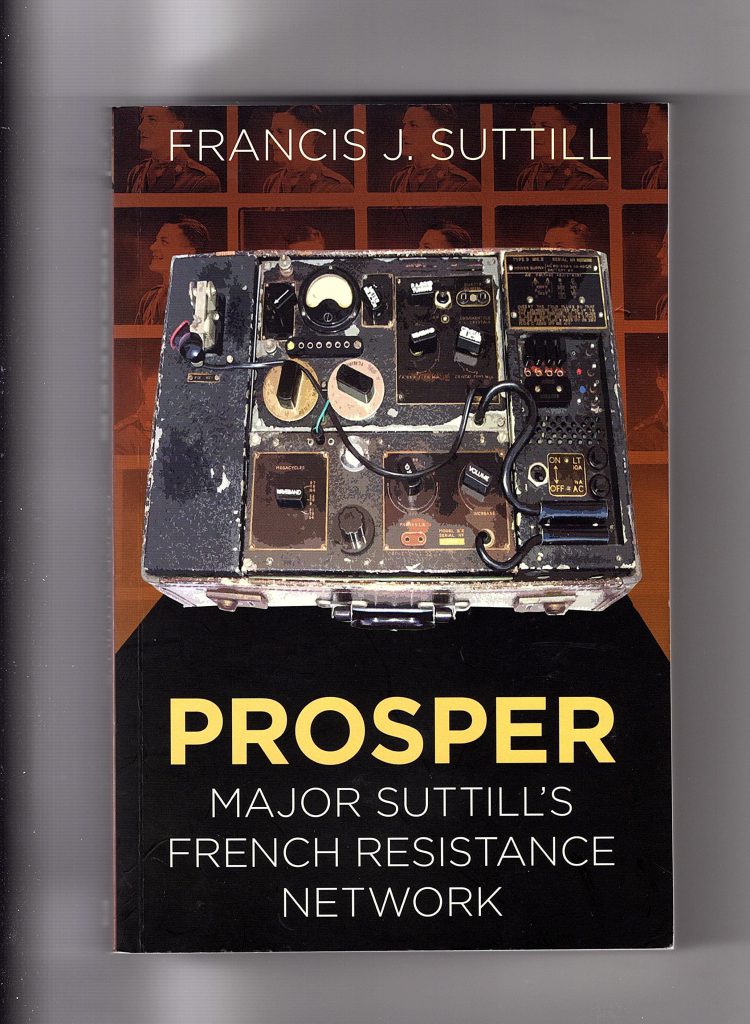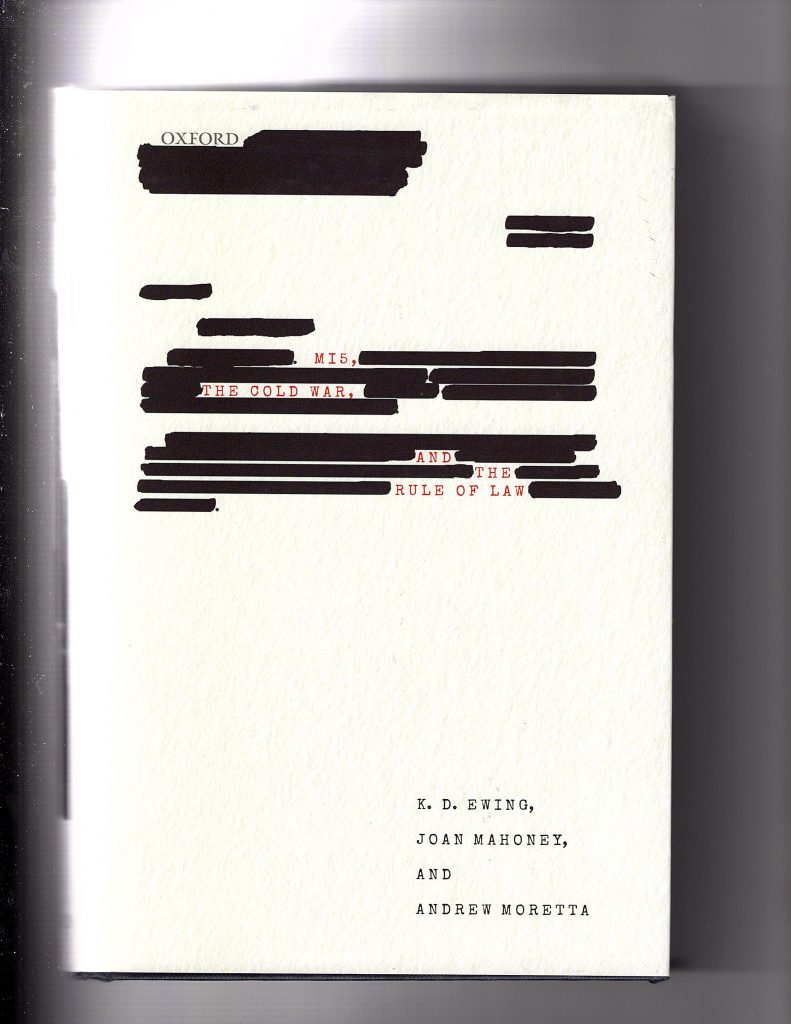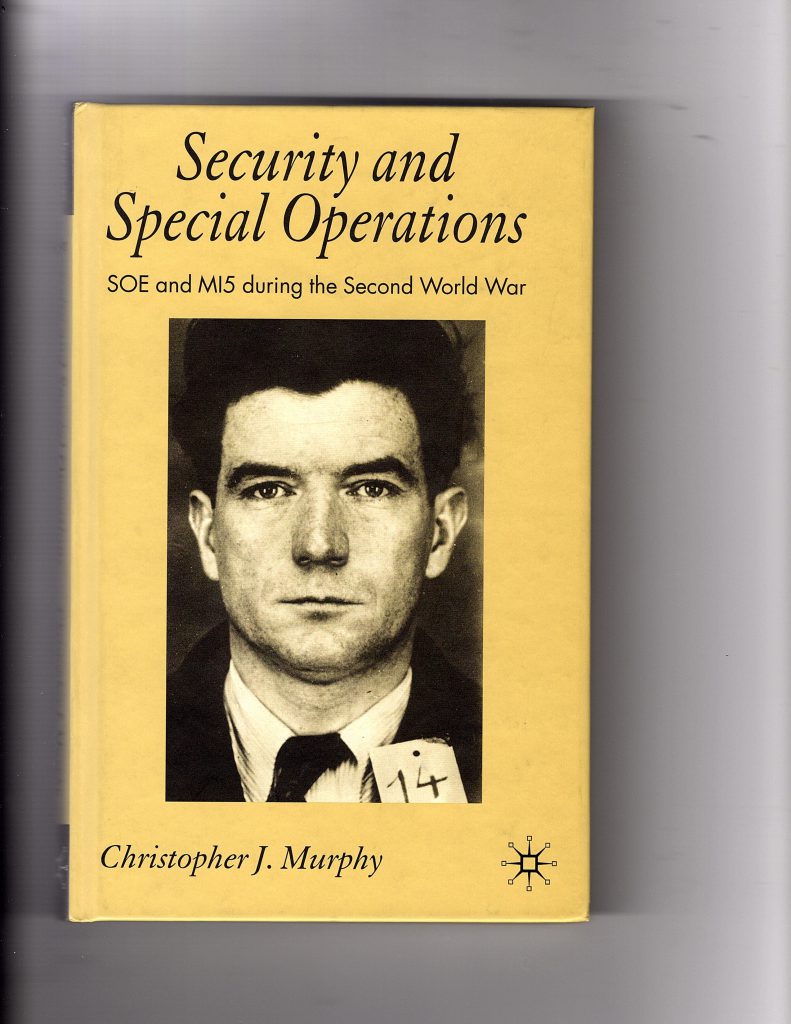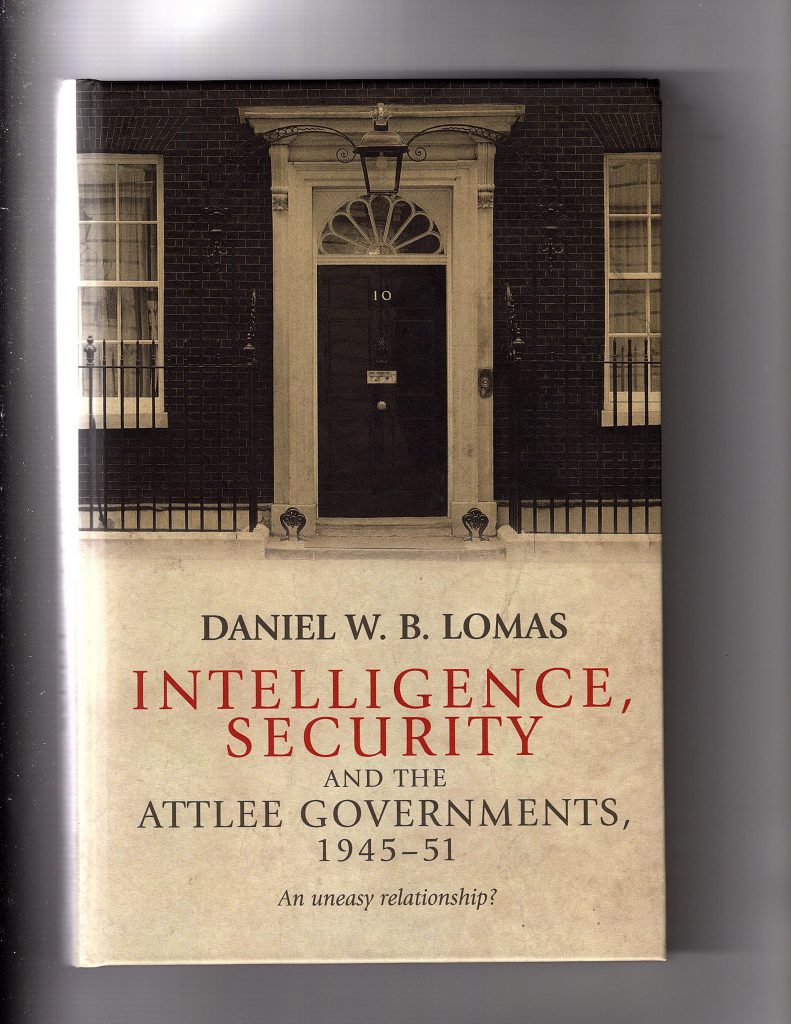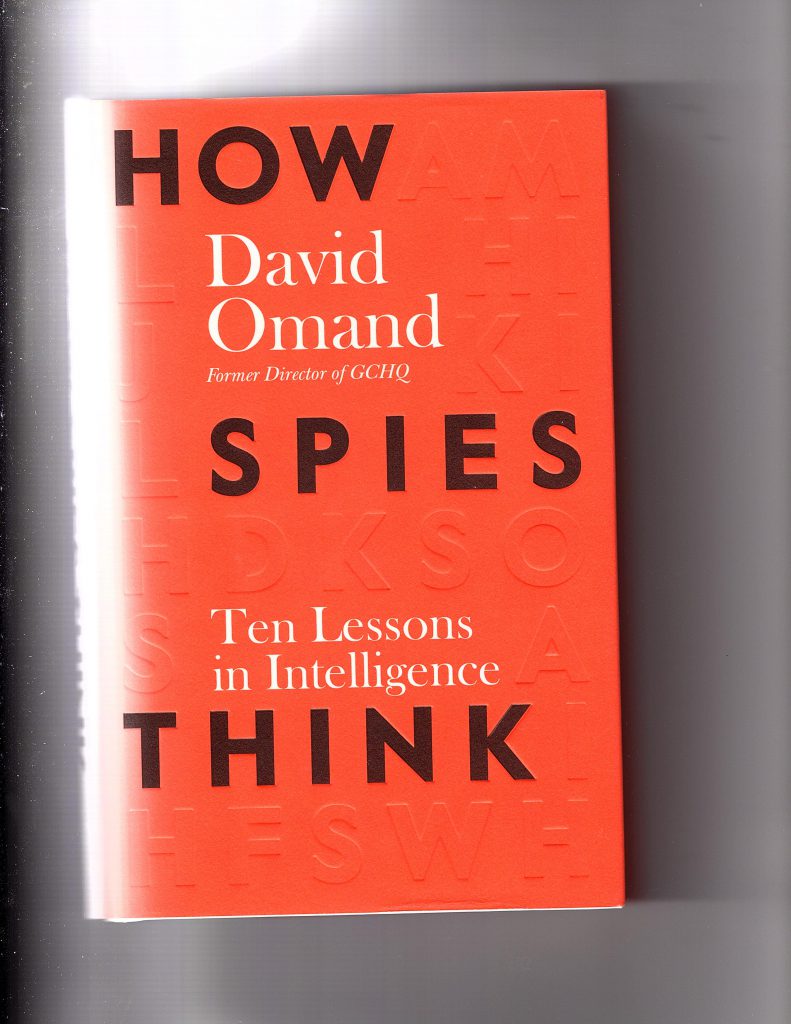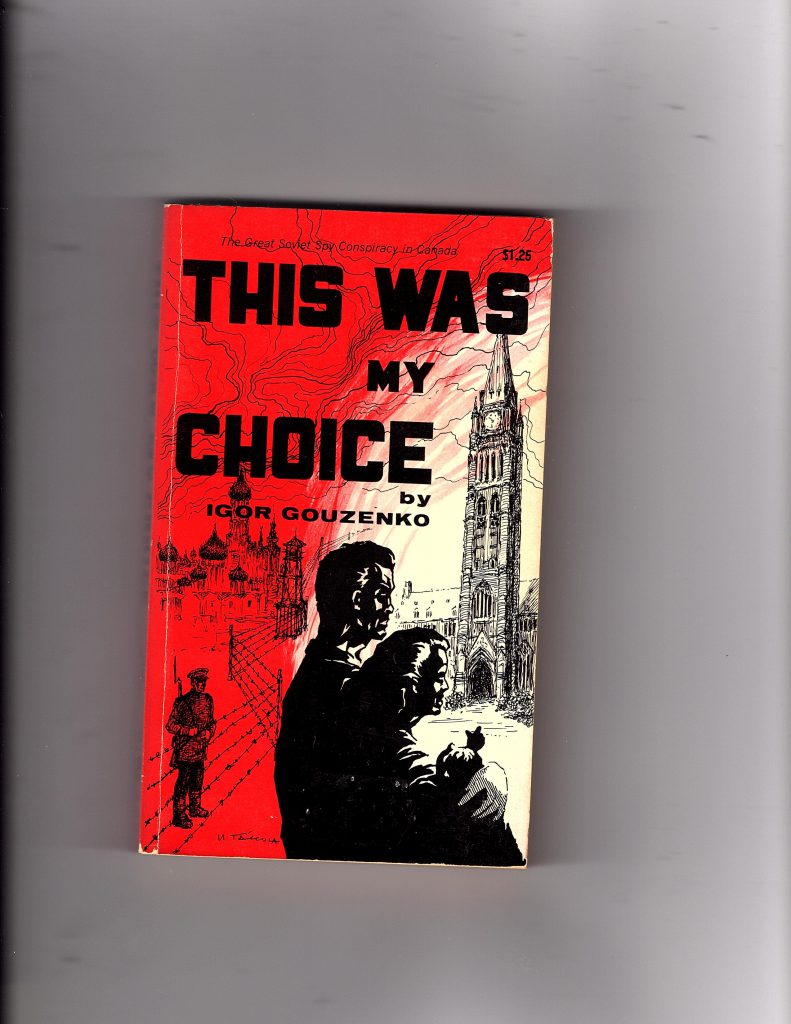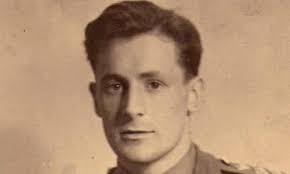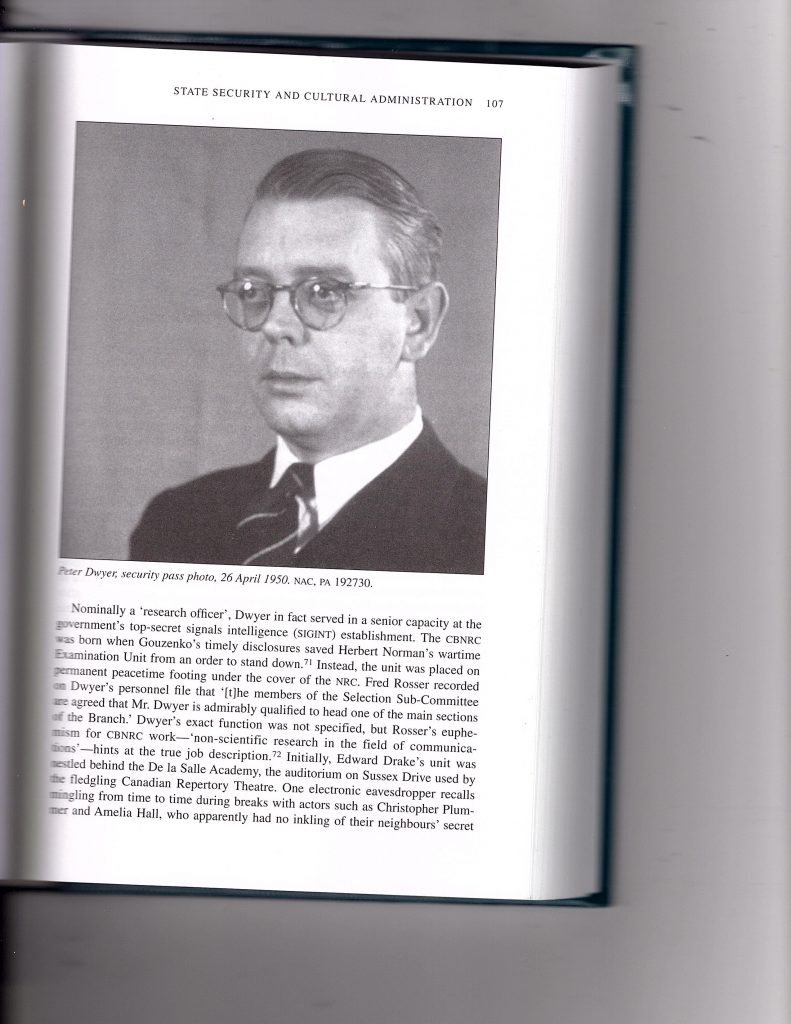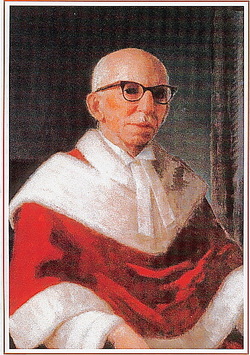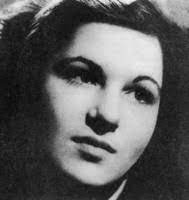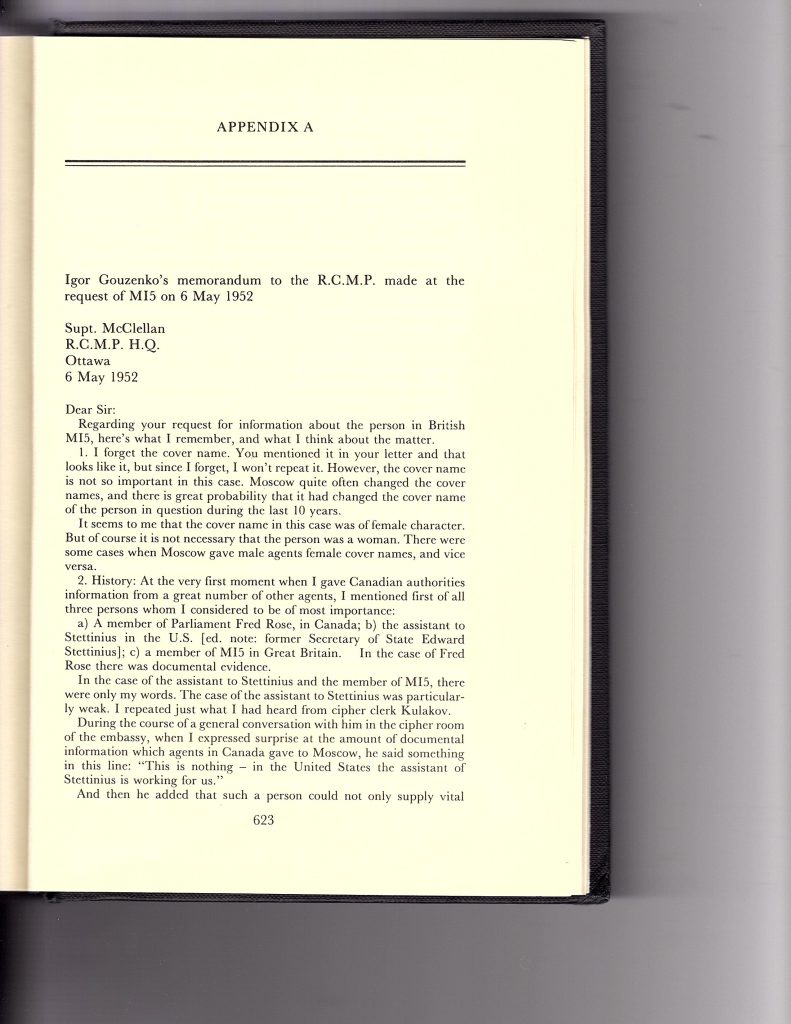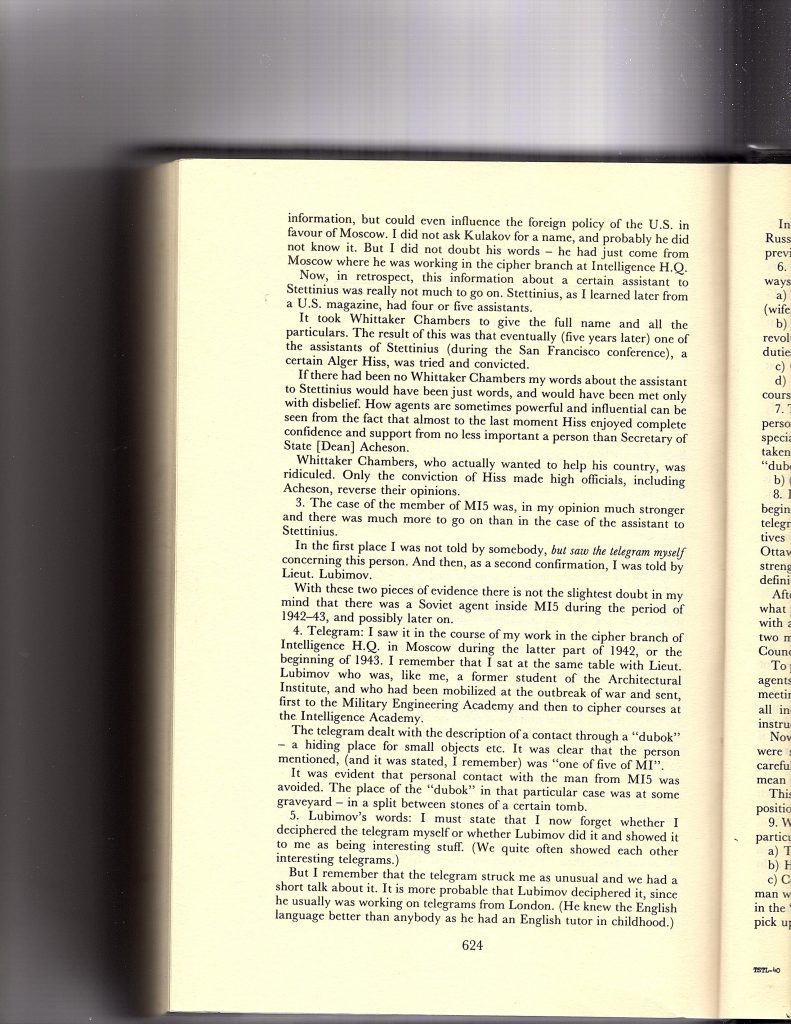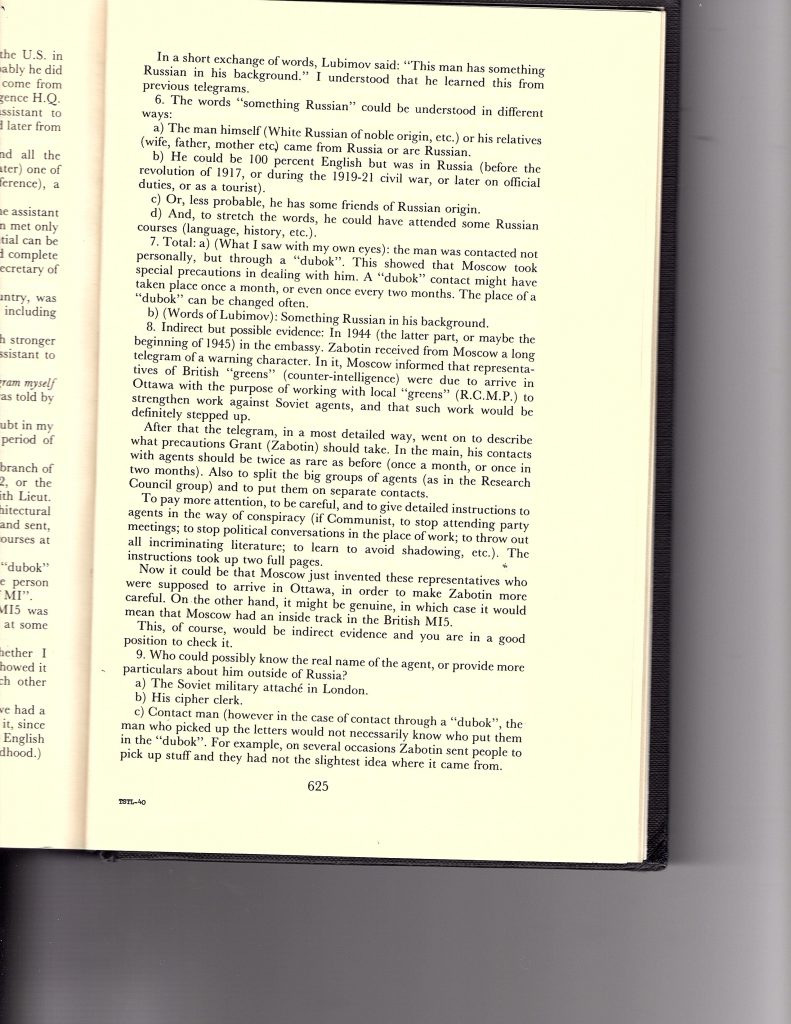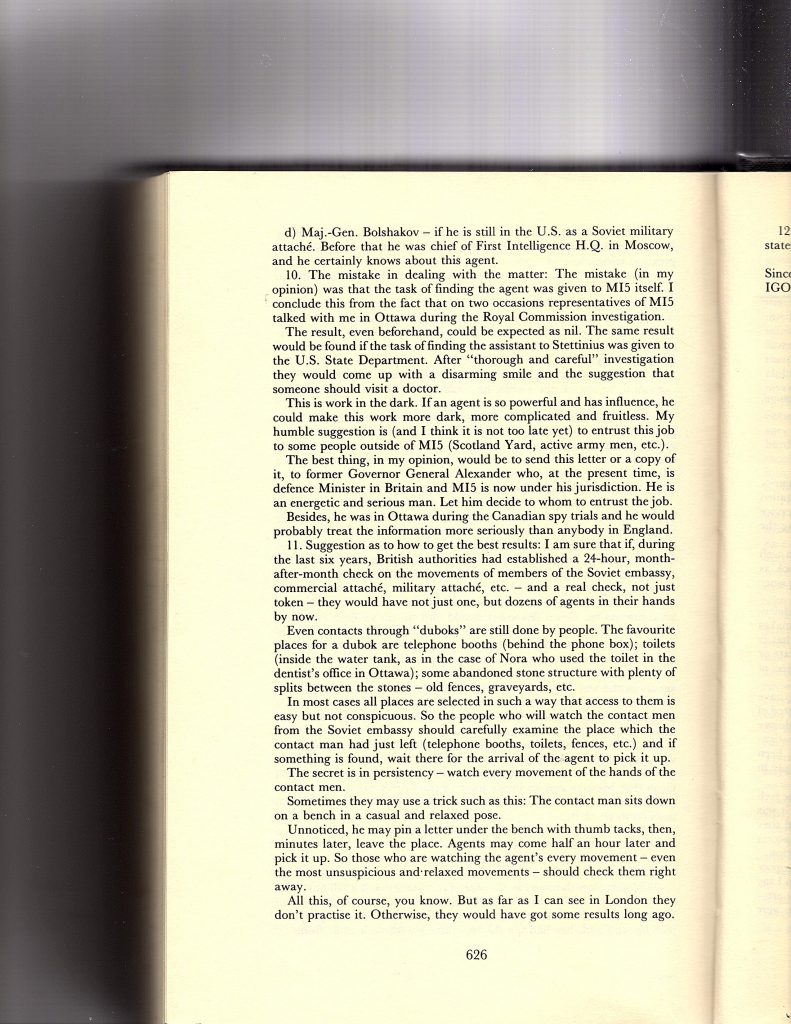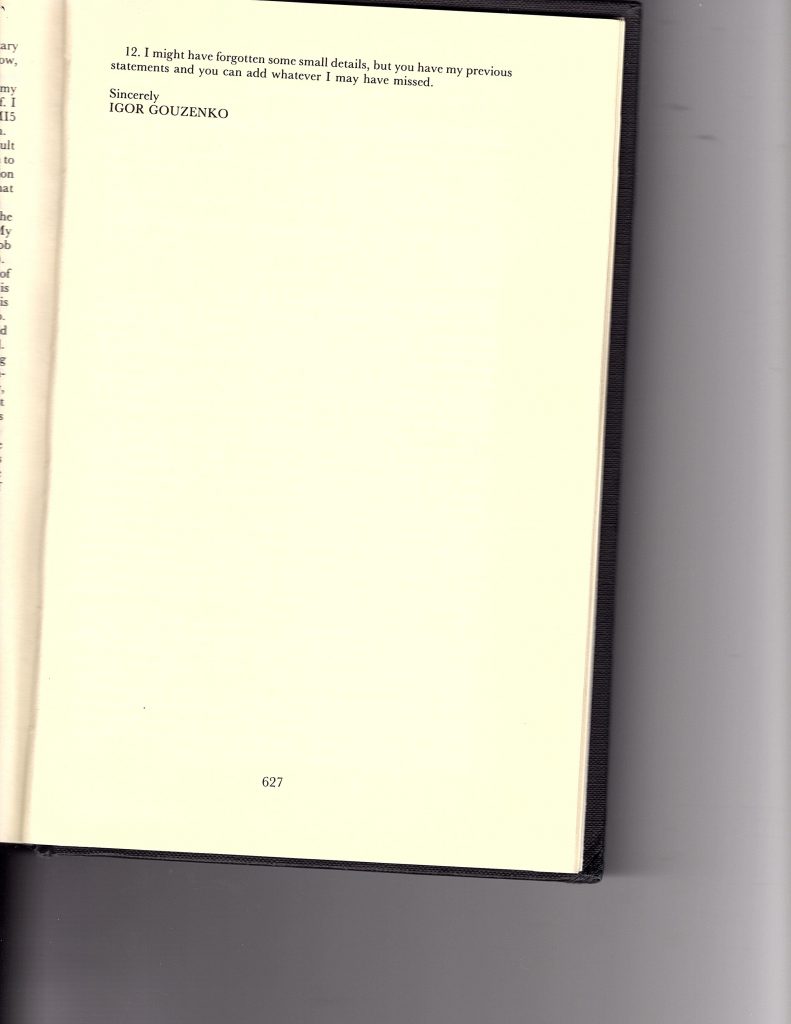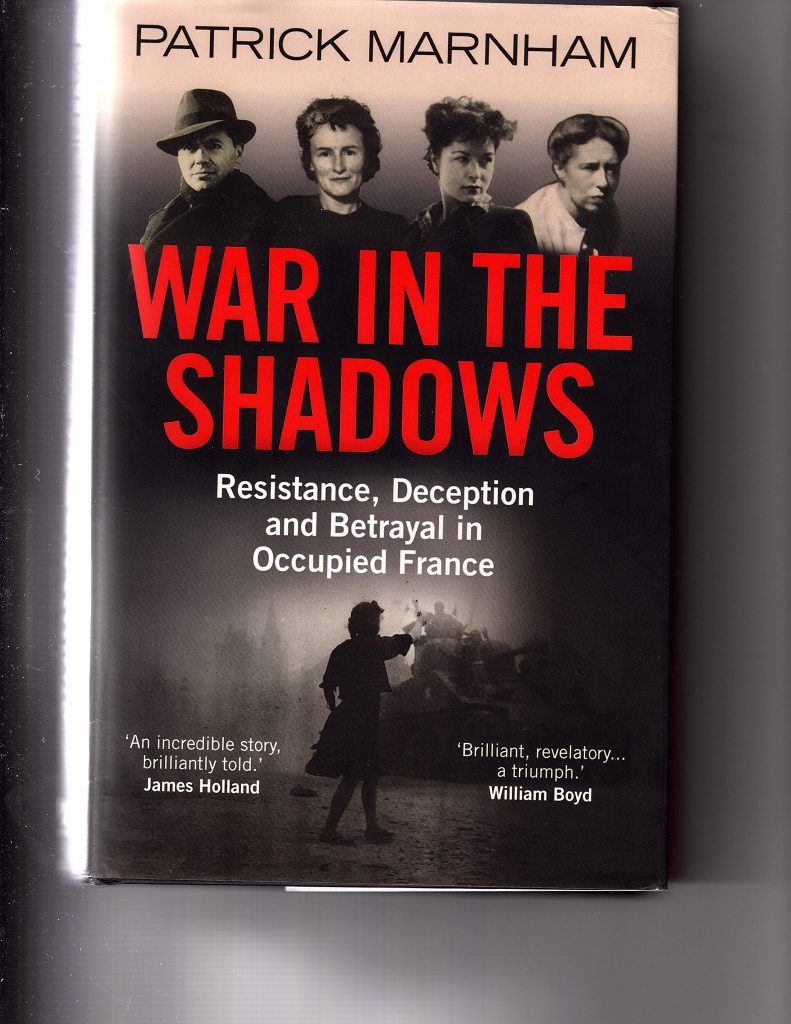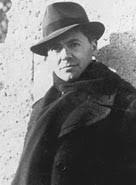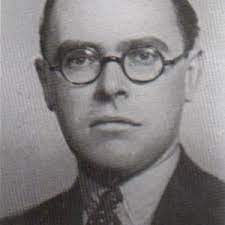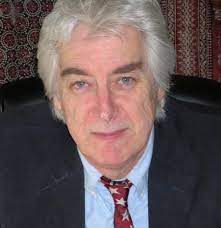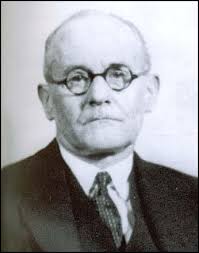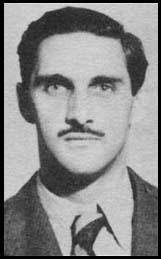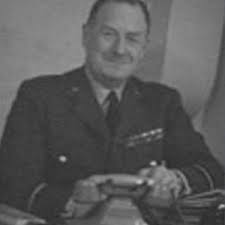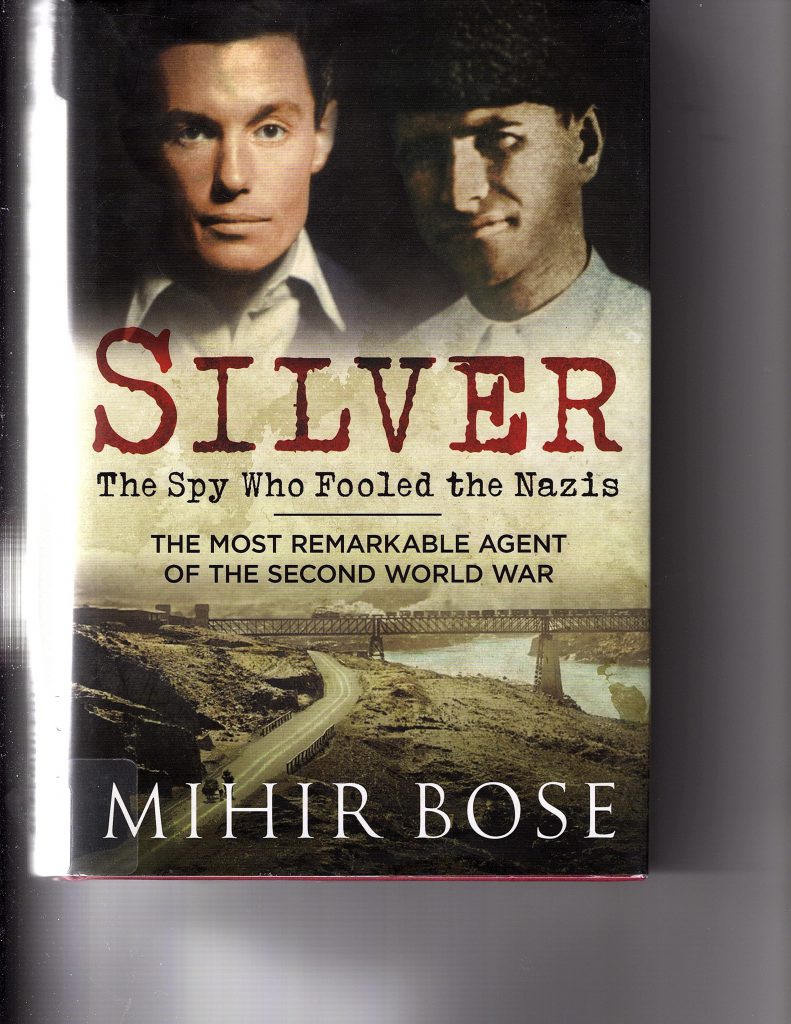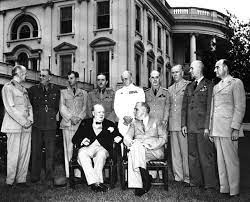
Introduction: In this segment, I continue my close analysis of the intersection of events in SOE, MI5, MI6, the XX Committee, the London Controlling Section, and the Chiefs of Staff in the first half of 1943, as they relate to SOE’s misadventures in France in the summer of that year. My original intent was to carry the story forward until the end of June, and then summarize the aftermath, but I discovered so much material concerning Suttill’s visit to the UK in late May that I decided to defer the unfortunate happenings in June to a later report. I shall take a break from PROSPER, and the run-up to FORTITUDE, for a month or two before returning to chronicle the events of June and July, and to offer a deeper analysis of what contributed to PROSPER’s capture and demise, the discovery and confiscation of stores of armaments, and the arrest of hundreds of members of the French Resistance.
If you simply want to learn about the breakthrough theory that resolves the contradictions in the accounts of Francis Suttill’s movements, scroll down to ‘A Breakthrough Theory’, and then decide whether the investigation itself is of interest to you.
Contents:
The Story So Far
1. April: The Chiefs Ponder; Déricourt’s Recall
2. May: The TRIDENT Conference
3. May-June: PROSPER is Summoned
Buckmaster’s Stories
Tales of Betrayal
The Authorized History
Robert Marshall & Fresh Challenges
The Contribution of Suttill’s Son
The SOE Adviser and the Register
PROSPER in France
A Breakthrough Theory
The Story So Far: (see also https://coldspur.com/bridgehead-revisited-three-months-in-1943/)
John Bevan, the new head of the London Controlling Section, was encouraged by MI6 to set up a new deception committee, the TWIST Committee, to assist in Operation OVERTHROW in September 1942. This Committee stole some of the limelight from the joint XX Committee. The British and American Chiefs of Staff then struggled mightily with offensive priorities at the CASABLANCA Conference in January 1943, seeming to acknowledge that, after the assault in the Mediterranean had been decided upon, a re-entry to Northern France would be impossible that year. Meanwhile the dubious agent Henri Déricourt, recruited by SOE/MI6 despite his connections with German intelligence, started his operation in Northern France, arranging drops of agents in ‘safe’ landing-areas. In March, SOE received a new directive that diminished the role of France in the plans of the Chiefs of Staff, but arms drops to that country began to accelerate markedly. Churchill was still uncomfortable at the turn of events because of the personal commitments he had made to Stalin about the invasion, and the American Chiefs of Staff seemed not to have bought in completely to the ideas of Sir Alan Brooke, the British CIGS.
I also encourage readers to re-inspect my analysis of the historiography of the Prosper affair at https://coldspur.com/the-prosper-disaster/.
1. April: The Chiefs Ponder; Déricourt’s Recall
One might expect that the requested radical changes to Bevan’s Deception Plan would have occasioned appropriate revisions in policy and directive from the Chiefs of Staff. Having received Bevan’s stern missive of March 31, with Morgan also making some vigorous noises and presenting organization charts, the Chiefs issued a fresh edict on April 1, in the form of a Directive to the Chief of Staff to the Supreme Commander (designate). (Morgan’s appointment was not formally announced until April 13. Alan Brooke’s advice to him when he outlined the job was: “Well, there it is. It won’t work, but you must bloody well make it.”) Yet their first initiative was astonishing. It decreed:
You will accordingly prepare plans for the following operations:-
(a) An operation in 1943 on the largest scale that resources permit with the object of testing the degree of resistance. This may find or produce a situation which may lead to
(b) A return to the Continent in the face of German disintegration at any time from now onwards with whatever force maybe available at the time.
(c) An invasion of the Continent in 1944.
This was presumably a step forward in declaring that the ‘invasion’ would not take place until 1944, but the preamble about embarking upon an operation in 1943 ‘on the largest scale that resources permit’ in order to assess the strength of German ‘resistance’ was a flagrant snub in the face of the US Chiefs of Staff. Yet the draft was sent to Washington, so that that body would have an opportunity to view it. General Morgan himself, in his memoir Overture to Overlord, states that he was authorized to proceed on the terms of the draft, assuming American approval.

At this stage, the Chiefs and their aides had probably not internalized Bevan’s Revised Plan, but the Chiefs themselves must have been aware of the messages arriving from Washington in late March about reducing BOLERO commitments (the importation of troops and material from the USA). Yet before Bevan’s new plan was formally presented, they had to deal with a different matter. The Ad Hoc Committee on Equipment for Patriot Forces presented its long-awaited report, on April 3. This Committee, chaired by two Brigadiers at the War Office (Oliver, and then Curtis, from February 24), contained a number of services men, as well as Cavendish-Bentinck of the JIC, and Grierson and Rowlandson from SOE. Its mission was to apply some structure to the challenge of providing equipment to Patriot Forces.
The scope of the report is too large to be analysed here, so I shall focus on the most relevant highlights for this story. It made distinctions between ‘Resistance Groups’ and ‘Patriot Forces’, the latter entity being realized only when such forces became active in areas liberated by Allied armies. (These ideas had already percolated into the March SOE Directive.) It provided an Appendix which, based on numbers provided by SOE, claimed a figure of almost 700,000 members of Resistance Groups in Europe in December 1942, which could rise to 1.25 million (with a number of 225,500 given for France), and thus had the potential to evolve into ‘Patriot Forces’. It laid out a very ambitious and comprehensive projection of the materials needed by such armies. And its predictable conclusion was that ‘air transport . . . should be considerably increased’.
The Committee seemed to have been carried away, and unduly swayed by persuasive SOE gusto, since it did not pay enough attention to the vital details of how this mass of equipment would be stored and then made available before the allied armies arrived, or how isolated guerilla groups could be morphed into an effective military organization. The aspirations of this conclave would have to be dampened soon, but at this juncture the Chiefs quickly had to turn their attention back to Bevan’s revised Deception Plan, discussed on April 7.
What is extraordinary about the new paper is how little has changed. It is the result of some very careless work, maybe attributable to Bevan’s extended absence in North Africa during March. The Controller still introduces his recommendations with the comments about Germany assuming that ‘the Allies will not attempt a large-scale invasion of France and the Low Countries until the summer of 1943’. His general proposal still claims that the first (dummy) operation planned should be ‘the invasion of the Continent by means of an attack across the Channel’, when the US Chiefs of Staff had declared that such feints would be a waste of time. All the details about BOLERO, and the overstatement of Allied strength, etc. remain in the text. The only significant changes noticeable appear as an expansion of the goal of exaggerating strength in the UK, which now reads:
7 (B) (i) Prudently exaggerate Allied strength in the U.K., both in men and material, including the rate of the build-up of BOLERO. No equipment or supplies required for actual operations will be diverted for this purpose.
And he qualifies it all with a Note, namely:
The success of this deception plan will largely depend upon the enemy being able to obtain visual evidence of the presence of adequate numbers of ships and landing craft; however the limitations stated in 7 (b) (i) above must govern.
In other words, dead on arrival. Astonishingly, the Chiefs of Staff approved it, and circulated instructions to their Commanders-in-Chief in the Middle East and the Pacific, as well as to Eisenhower in Algiers. Were they merely inattentive? One wonders how seriously they were taking deception efforts at this stage of the war.
It does not appear that any information on the new plan reached the XX Committee, which had a placid beginning to the month. No reply to Masterman’s letter to Bevan concerning W/T cover for SPARTAN had arrived, but Bevan was abroad for most of the month. Wingate, his deputy, had to stall for time. MINCEMEAT was a hot topic, but the Committee had to reduce its potential with DAs (erroneously so-called ‘double agents’), since it was having problems maintaining the integrity of its notional agents. On April 8, it was decided that FATHER would be dispensed with, that BRUTUS should announce the capture and execution of CARELESS, that RAINBOW should be allowed to fade away, and that even TATE (a real agent) should ‘send messages indicating that he was beginning to get badly scared’. While GARBO sent his first wireless message under control at this time, the XX Committee was overall playing a muted role in deception activities.
And then, on April 14, Churchill began to show some alarm, after meeting the US General Lee, and hearing of his plans for an operation that involved some fairly drastic clearing out of the local population in parts of Devon for training purposes. Churchill wrote to ‘Pug’ Ismay, his chief staff officer, for the benefit of the Chiefs of Staff:
Here you have these very keen men trying their utmost to mount an operation which we have all decided cannot physically take place. Far-reaching preparations are being made and money and labour wasted. We really must come to some clear-cut decision and issue the necessary orders to prevent dissipation of effort. We must reach a decision with the American Chiefs of Staff and the President.
To what was Churchill referring here? The suggestion of an operation which has been unanimously been abandoned must surely mean ROUNDUP (the full-scale re-entry, the eventual OVERLORD) rather than the opportunistic SLEDGEHAMMER (the plan for a bridgehead in the Cotentin peninsula, to take place if the Germans showed signs of disintegration). While ROUNDUP had been delayed until 1944, SLEDGEHAMMER, which had originally been an American idea, would now, with the deferred BOLERO build-up, have been able to proceed only with British troops, so the allusion to the involvement of US forces indicates that Churchill was dismayed by a proposed American contribution to a non-existent ROUNDUP plan that was not a deception exercise. Had General Lee not been indoctrinated? Churchill went on to write about ‘camouflaging’ the decision, and invited the Chiefs of Staff to ‘mark time’, or stop BOLERO altogether.
It is difficult trying to parse Churchill’s thought-processes here. One might conclude that he
was unaware of the recent deception study that recommended using such build-ups as Lee’s to promote the notion of a 1943 re-entry, but had forgotten that the Combined Chiefs of Staff had recently ruled such a deception to be a waste of time and resources. In any event he added:
I do not propose to inform Marshal Stalin of these developments, hoping that events in VULCAN [the attack on German positions in Tunisia] and HUSKY and thereafter will show substantial results.
Yet Churchill had already informed Maisky of the delays in BOLERO. What was he thinking? Moreover, Alan Brooke recorded in his diary entry for April 13 that he had discussed with Churchill that same evening the advisability of removing all landing-craft from the UK to the Mediterranean in 1943, and indicated that he had persuaded the Prime Minister of the merits of dedicating all energies on the South, as a way of producing the greatest dispersal of German forces and ‘making the going easier for the Russians’. “Luckily PM finally agreed”, he wrote.
Churchill followed up a day later with a memorandum that would appear to confirm the hypothesis in the preceding paragraph, in which he declared that ‘no important [sic!] cross-Channel enterprise is possible this year’, indirectly suggesting that ‘unimportant’ crossings might be feasible. He added that
It is nevertheless highly important that this fact should not become widely known, and that powerful camouflage and cover operations should continue in order to pin the enemy to the French coast and not to discourage our Russian allies.
Here, the Prime Minister appeared to be drawing distinctions between ‘money and labour wasted’ (in pursuit of vain actual operations) and ‘powerful camouflage and cover operations’ (as a mechanism of deception). Under which category did General’s Lee’s project come? It is not clear. In any case, such an edict was of course too vague to be enforceable. The Prime Minister continued, writing that he wanted BOLERO to continue, but be slowed down with a goal for 1944 re-entry. It was important that the impression be given that the American troops ‘are continuing to arrive in large numbers’. He was now getting nearer to the kernel of the deception plan, but his view of it still seems to be as a ploy to deceive the Russians more than outwit the Germans. He was so wound up by his ‘Second Front’ commitments to Stalin that he felt it more convenient to deceive him about the reality of 1943 re-entry plans than convince him of the seriousness of the project to maintain German forces in Western Europe, and keep them away from the Soviet theatre.
On April 18, he issued a more precise – and much quoted – message, in which he back-tracked from the opinion that SLEDGEHAMMER could take place in 1943, but presented his conclusion as if it were an original thought that had just occurred to him. It led with the following sentence:
A German collapse being extremely unlikely and not to be counted upon this year, and neither American reinforcements nor landing craft being available, we cannot do “SLEDGEHAMMER” this year.
He then gave new instructions for General Morgan’s organization to engage in ‘camouflage and pretence’ in order to ‘pin the enemy in the west by keeping alive the expectation of invasion’. Yet Churchill must have been the only person who had in April still carried the idea that SLEDGEHAMMER could have been a possibility in 1943. (Last month’s report showed how he still nurtured the idea strongly in March.) The idea had been abandoned by the Americans in 1942 (as Michael Howard reports), had again been rejected at Casablanca, the Chiefs of Staff had just approved Bevan’s plan that dismissed any operations in North West France, and Churchill himself had leaked to Stalin via Maisky the impossibility of launching any attack in 1943. SOE had been said to have acknowledged the fact since the previous year. And Churchill still seemed to have not internalized the fact that, by virtue of the strategy of helping Stalin by keeping German divisions ‘pinned’ in western Europe in 1943, any half-baked engagement such as SLEDGEHAMMER was bound to end in failure.
Churchill’s message concluded as follows, in highly perplexing terms, with words that would seem to confirm that his earlier comments were referring to ROUNDUP:
If it gets about, as I fear it must, that any SLEDGEHAMMER is off for this year, it should be insinuated that this is part of our cover, and that the real preparations are going forward. Very large preparations should be made at the embarkation ports, and the assembly of the greatest amount of barges and invasion craft should be made culminating in July and August.
To whom were such ‘insinuations’ directed? And why ‘insinuate’? ‘Insinuation’ suggests the propagation of a lie in an underhand manner, usually with the intent to harm. Which group would have known about SLEDGEHAMMER (whether coded or not), should be prevented from learning the fact of its cancellation, but must be induced to believe that its abandonment was to conceal the idea that a real operation was going ahead?
It cannot be the Germans, as Churchill must have assumed that they were clueless about SLEDGEHAMMER and it therefore would not make sense that they would pick up news of its closing down through rumour. It could possibly be the French Resistance forces, whose confidence in a 1943 re-entry Churchill might have thought was important to their morale, and to the overall strategy for keeping German forces in Western Europe, but insinuation would have been a sordid treatment of them. It could conceivably be SOE’s French sections, having to handle the expectations of their networks, but that would surely be no way to treat some of Churchill’s darlings.
I suspect that Churchill had two groups in mind, both ‘frenemies’ of some kind. The first was the leaders of the Free French, since he and Brooke had the previous month made vague promises to Delestraint and Moulin of a ‘bridgehead’ to be made before the autumn of 1943. The second target was most surely Stalin and his gang, who were supposed not to have direct access to War Cabinet plans, but might conceivably hear about them, and would need to be disabused of their impressions. When SLEDGEHAMMER inevitably turned out to be an empty threat Churchill would be relying on VULCAN and HUSKY to ‘pull his chestnuts out of the fire’, in Stalin’s memorable phrase. Yet, for these audiences, Churchill had turned deception policy on its head: instead of dummy operations intended to indicate a proper but non-existent assault, the rumours of a cancelled operation were supposed to mask the fact that a real one was still viable!
The Chiefs did not seem to be fazed by Churchill’s insights, or want to point out how bizarre and illogical his proposals were. They simply took over the baton. On April 22, General Hollis laid out the requirements for the difficult challenge of involving the armed forces in deception exercises, couching it in terms of ‘deception must be regarded as the best means at our disposal for containing enemy forces in North-West Europe’, and implicitly abetting the ‘help the Soviet Union’ policy. On April 26, the Chiefs re-issued their final version of their directive to Morgan, accompanied by a note from General Hollis that indicated it had been ‘finally agreed by the Combined Chiefs of Staff’. Yet again, however, the balloon of a 1943 re-entry is floated. To support the ‘Object’ of defeating the Germans in North-West Europe (which was to be delivered by OVERLORD in 1944, of course, not HUSKY), the rubric set out:
To this end the Combined Chiefs of Staff will endeavour to assemble the strongest possible forces (subject to prior commitments in other theatres) in constant readiness to re-enter the Continent if German resistance is weakened to the required extent in 1943. In the meantime the Combined Chiefs of Staff must be prepared to order such limited operations as may be practicable with the forces and material available.
SLEDGEHAMMER and its associated waffle (‘a return to the Continent in the event of German disintegration’) were well and truly alive. Then, as if to acknowledge their error, on April 30 the Chiefs of Staff submitted to the War Cabinet a report on ‘Amphibious Operations from the United Kingdom 1943-1944’ which boldly explained that there would be not enough landing-craft in the UK even for training purposes, following up with the Churchillian phrases:
Consequently, there is no possibility of any substantial cross-Channel operation in early autumn of 1943 against organized opposition. . . . The abandonment of this operation makes it all the more necessary that there should be a vast scheme of cover and camouflage, in order to pin the enemy in the west by keeping alive the expectation of invasion.
So much for the opposition becoming ‘disorganized’. Morgan should have been mightily confused, but appeared not to be.
Though MI5 was not yet fully committed to this ‘insinuation’ business, it undeniably had the mission of ensuring that no confidential stories leaked overseas, and it had been intensifying its procedures against dubious arrivals from abroad. On April 3, Guy Liddell wrote in his diary that John Curry had written ‘a very good memo on penetration of SOE and SIS’. I do not believe that this memo has survived, but the very astute though neurotic Curry wrote expansively, in his in-house history of MI5, about measures to improve security at the London Reception Centre at this time. On February 12, a section known as B.1.D/UK had been set up to deal with British subjects who were returning to the country under circumstances similar to those of aliens, such as claiming to have escaped from prison or prison camps when they might have been suborned. The Germans liked to use them to learn more about escape routes. Such characters had to be treated carefully, since, as UK citizens, they could not be refused leave to land, but they also could be vital sources of information, and had to be interrogated gently.
Curry presents some very cogent analysis about the methods and the maintenance of the Information Index used to hold all intelligence gathered, and also comments on the co-operation of SOE, and the distinct obstructiveness of SIS, who wanted to protect information such as addresses used abroad. He wrote:
There were several major disasters, some of which might have been avoided if S.I.S. and S.O.E. had arranged from the beginning for all the information about their organisation to be centered at one point in the L.R.C. S.I.S consistently refused to do this, but S.O.E were anxious to do it as soon as they realised the nature of the dangers and the protection which the L.R.C. could afford.
Déricourt could well have been one of the unnamed ‘major disasters’. Having wormed his way through the L.R.C. once, however, he was now an accredited agent, and did not have to be checked again.
Those latest discussions of the Chiefs of Staff did not mean that SOE received any revisions to its March Directive: the Chiefs were at this time waiting to receive Hambro’s ‘appreciation’ of it. In any case, it might not have travelled as far as Buckmaster and Section F, where projects of infiltration continued. The instructions to agents at the beginning of the month were highly provocative, expressing a hope that was not warranted. In his memoir of his father, PROSPER: Major Suttill’s French Resistance Network, Francis J. Suttill quotes the briefing that was given to Claude de Baissac on April 1 (available in HS 9/75):
At the present stage of the war, our orders are to cause the maximum damage and confusion in the shortest possible time. This will continue to apply even if France is not the scene of actual hostilities during the next few months, since we have been and must still be successful in pinning down a large number of troops who would otherwise be available for other sectors.
‘Even if’? This is a vitally important document, as it offers proof that the Resistance at this time had been encouraged to believe that the early arrival of Allied forces (‘actual hostilities’) in France was highly probable. And the possible hidden sacrifice of ‘pinning troops’ (a questionable use of terminology in the circumstances) was quite clear, even though the identity of ‘other sectors’ (i.e. the Eastern Front) was not.
Déricourt undertook his second operation, a double Lysander landing in the Loire Valley, on the night of April 14/15. The occasion was marked by two sinister events, however. The first involved the presence of a Gestapo team at a nearby school, which has been explained as coincidental, but which alarmed Henri Frager, who had just arrived on the first flight. According to Foot ‘the incident gave Frager a bad opening impression of Déricourt’. The second event was more controversial. Déricourt was recalled to England, on London’s orders, and he flew back as the sole passenger on April 22/23.
Why was Déricourt recalled? Foot downplays the whole episode, discounting the agent’s own explanations, and merely notes that he had ‘a few day’s staff discussions’. Only in an Endnote does Foot raise a very provocative point: “In fact he had been summoned back to receive a reprimand from his friend Verity, for having endangered a Lysander through an ill-placed flarepath.” Hugh Verity would appear to confirm the story, reporting that Déricourt had placed the landing-flares too close to a tree, and thus caused Jimmy McCairns to damage his plane. His account is worth reproducing in full:
The difficulty I thought must be that Déricourt was getting over-confident after a number of successful pick-up operations. He was an experienced pilot and he may have thought he knew too much about it to bother to obey the rules. To make sure he did not take chances of that sort again I decided he should be ‘torn off a strip’, i.e. informally reprimanded. I informed SOE ‘F’ Section, through the usual channels, that we would not do any more landings with Déricourt (apart from one to pick him up) until he had been back to us for refresher training. I also thought that he might have been overdoing it in France and that a short rest in England would do him good.

This does not make sense, and Verity needlessly overegged the pudding. Déricourt had undertaken only a single operation before this one, so the reference to ‘a number of successful pick-up operations’ is spurious. If in fact he had achieved several successes, the less justification there would be for hauling him back to Britain for rebukes and training. In any case, the remedial action seems excessive for such a transgression: a sharp message would surely have caused him to follow procedures more closely. Similarly, the argument that a rest-cure in England would address any problems due to Déricourt’s ‘overdoing’ things in France is absurd. He could simply have gone to ground for a while rather than engaging in two hazardous flights across the Channel.
The pilot Frank Rymills was sceptical of this account. In his memoir on Déricourt, Rymills questions McCairns’ story, and notes that Peter Vaughan-Fowler made a successful landing in the same field, thus implying that the mistake was McCairns’. Rymills also questions the details of Déricourt’s return in Verity’s plane, since it was given a unique operational name (‘Tony’) [actually ‘Tomy’: coldspur], and Déricourt was the only passenger, and he concludes:
Someone must have considered it imperative he returned to London that Easter. I would suggest the tree incident was used as an excuse which could be used by way of an explanation to Boemelburg to cover his hurried recall to London.
One has to wonder who was fooling whom here. Did SOE/SIS really believe that the Sicherheitsdienst would be taken in by an obvious dangle of an agent, recently flown in clandestinely, who was arranging other aircraft drops, and somehow conclude that his activities were harmless, and that they would be suitably misled by the claim that he had to be recalled for training? Even Foot draws attention to the claim that Déricourt made to Jean Overton Fuller that it was only during that stay that ‘another organization in London’ (i.e. SIS not SOE) had authorized him to contact the Germans on his return to Paris. Yet the SOE historian does not consider the implications, simply debunking the assertion in favour of the reprimand story. Rymills, on the other hand, adds commentary to the effect that Boemelburg had met Déricourt in late March, had asked him about the PROSPER circuit, and that Déricourt was regularly lunching with Suttill at this time. Rymills adds a provocative and maybe too imaginative thought:
In the third week of April, Déricourt had a further meeting with Boemelburg who warned hm to keep away from Henri Frager and his contacts because his Donkeyman network had been penetrated by the Abwehr [sic!]. Was this the information which spurred Déricourt in returning to London that Easter?
That would suggest that the return was Déricourt’s initiative, when Rymills had earlier indicated that the urgent recall had been initiated by London. We are well into the territory of the Wilderness of Mirrors now.
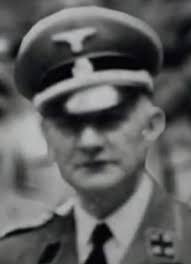
In All The King’s Men, Robert Marshall supplies further evidence of skulduggery from the oral testimonies given him. He has Déricout having another meeting with Boemelburg a few days after the March operation, when Déricourt provided the SD officer with ‘a detailed description of everyone who had travelled in on the Lysanders’. According to what Dr Götz (in charge of surveillance at the SD, who also became Déricourt’s contact) told Marshall in December 1982, Déricourt had approached Boemelburg soon after his arrival, and offered his services because he had been sickened by the ‘rampant Bolshevism’ apparent in London. The rationale and motivations of both SIS and the SD in this case merit closer analysis another time, since it seems incredible that either could take seriously the claims that Déricourt made separately to them, and build a project of robust tradecraft out of what they were told. Moreover, Marshall raises what I consider a highly dubious and supererogatory goal for Dansey’s intrigues – that Déricourt was to gain an insight into the SD’s operations, and that it would be ‘a coup comparable to deciphering their ENIGMA codes’.
Yet Marshall’s narrative does impart one intriguing insight, also bequeathed by Horst Kopkow. During the conversation that Déricourt had with Boemelburg in late March, as I recorded last month:
Boemelburg asked him if he knew anything about PROSPER, to which Déricourt replied that he had heard it had something to do with the invasion.
Marshall adds, in his Endnotes, that ‘Boemelburg’s first priority was PROSPER and the invasion. Information about flights was secondary’. This leads to two challenging questions: How and why had Déricourt been told about a coming invasion? And why was PROSPER singled out as being connected with invasion plans, when arms drops had been increasing to all French circuits? In any case, the relationship between Déricourt and Boemelburg solidified. Déricourt was paid, and became agent BOE/48.
Charles Hambro was probably unaware of what Déricourt was up to when his rather coyly worded ‘Appreciation’ of SOE activities in 1943, responding to the March Directive and dated April 21, was distributed to the Chiefs of Staff on April 24. It gave a tour d’horizon of SOE’s capabilities and strategies around Europe. As far as France was concerned, it patted itself on the back, claiming that the ‘tide of resistance’ was mounting steadily, but then made a rather startling statement:
Apart from sabotage groups, S.O.E. is in contact with, and assisting to organise and equip, widespread Resistance Groups who are preparing for action on a large scale when our invasion of the Continent begins.
It went on to suggest that ‘50,000 men could be brought in for guerilla warfare on invasion, granted adequate supplies could be delivered.’ Hambro’s report also indicated that the expected reductions in operations in Northern Europe would be counterbalanced by the ‘increasing demands for operations to France and the Low Countries’, and that 186 operations were planned ‘for the April moon’. The final statement regretted the ‘inadequacy of air transport’ and indicated that it would be impossible to maintain resistance at its present pitch with the resources allocated. ‘Demands exceed the means of delivery by about 200%’. In an Annex, Hambro referred to the problem of reconciling short-term and long-term objectives, and characterized the policy dilemma as follows:
Since one of the essential characteristics of Resistance Groups is that, unless they are served sufficiently to enable them to retain their dynamic quality they tend to disintegrate, the demand for supplies is progressive and the lack of adequate transport facilities not only retards their expansion but threatens their very existence. Quite apart from this practical requirement, the degree of support afforded by air transportation is regarded by the Resistance Groups as a token of British interest in their activities and the indispensable condition of their co-operation.
Did these generalities apply to all country groups, or was the proximity of France driving the analysis? Since no invasion was planned for at least twelve months, a perspicacious and attentive reader might have wondered what the expectations of these French guerrilla groups were, and might also have questioned the degree to which the cart was dragging the horse in these matters. Why was Hambro describing the invasion in terms that suggested it would be happening soon? Was it not the responsibility of SOE to lead and control these ‘demands’? And what was that about ‘co-operation’? For whose benefit were SOE’s activities being pursued, and with what finesse, if SOE needed to gain ‘co-operation’ from those whose cause they were trying to advance, and such assistance was thrown out as a bargaining tool? Hambro was all at sea. Moreover, if questioned, the chief might have had to admit (according to Buckmaster’s testimony in his History – see last month’s report) that April had been a very productive month for shipments to France.
Still, no major dissension from the conclusions appears in the minutes. As they show (at CAB-79-27-6), attention was drawn to one paragraph, in 5(a), which the Committee, ‘after a short discussion’, judged ‘to be at variance with the policy of H.M. Government’. This controversial paragraph qualified the degree that open revolt could be triggered in Italy, suggesting that ‘less onerous peace terms’ might be gained if the Resistance there committed to overthrowing the Fascist regime. The Chiefs then kicked the ball into the long grass by delegating tougher issues to the Joint Planning Staff, ‘on the assumption that their recommendations on Future Strategy were finally accepted’, with the instructions to report on the following:
(a) The most profitable areas for S.O.E. activity;
(b) In view of other commitments, to what extent the additional requirements of S.O.E. should be met, indicating an order or priority by areas, and whether economies could be effected in less profitable areas;
(c) Anything in the above appreciation at variance with the policy approved by the Chiefs of Staff, and to recommend what further instructions should be issued to S.O.E.
It was as if the Chiefs had forgotten about the priorities they had laid out in the March Directive.
Behind all this the TWIST Committee was pursuing its objectives. At the April 15 meeting of the XX Committee, Colonel ‘Tar’ Robertson graciously updated the assembly on its proceedings. The minutes read:
Colonel Robertson reported on the functions of the Twist Committee and on the arrangements being made for putting into effect the troop movements and physically carrying out the deceptive policy agreed by that Committee. This would be under the control of the Chief of Staff who had been appointed to the Supreme Command of the West. The question of putting over traffic suggested by the latter, by means of double agents, was discussed and it was agreed that all traffic, whatever the source, should continue to be submitted to the appropriate Approving Authorities before being sent.
Given that Morgan was to receive his final directive just two weeks later (after American approval), this statement might be said to have been jumping the gun, although Morgan had been given the authority to proceed anyway. If the TWIST Committee had really ‘agreed to’ a deception policy, whence had that policy derived? Should it perhaps have been refreshed given the urgent new events in the second half of April? And were the communications of Déricourt to be considered as part of the traffic that needed to be submitted to the Approving Authorities? It does not appear that anyone asked such questions at the time.
In fact, at this time a section known as Ops (B) was set up within COSSAC, chartered to deal with deception, and headed by Lieutenant-Colonel John Jervis Read. Roger Hesketh (who wrote the internal history of FORTITUDE) was recruited to handle the processes of ‘controlled leakage’, namely the passing of any information to the enemy. In this function Hesketh used Bevan’s TWIST Committee exclusively, and would attend its meetings to present requirements, after which the committee would determine what the most suitable method was for conveying the misinformation to the enemy. Hesketh himself reported that COCKADE was the only deception operation sponsored by COSSAC. Yet whether the TWIST Committee was intended to survive beyond the OVERTHROW operation is highly questionable: Bevan was no doubt delighted to have a new customer.
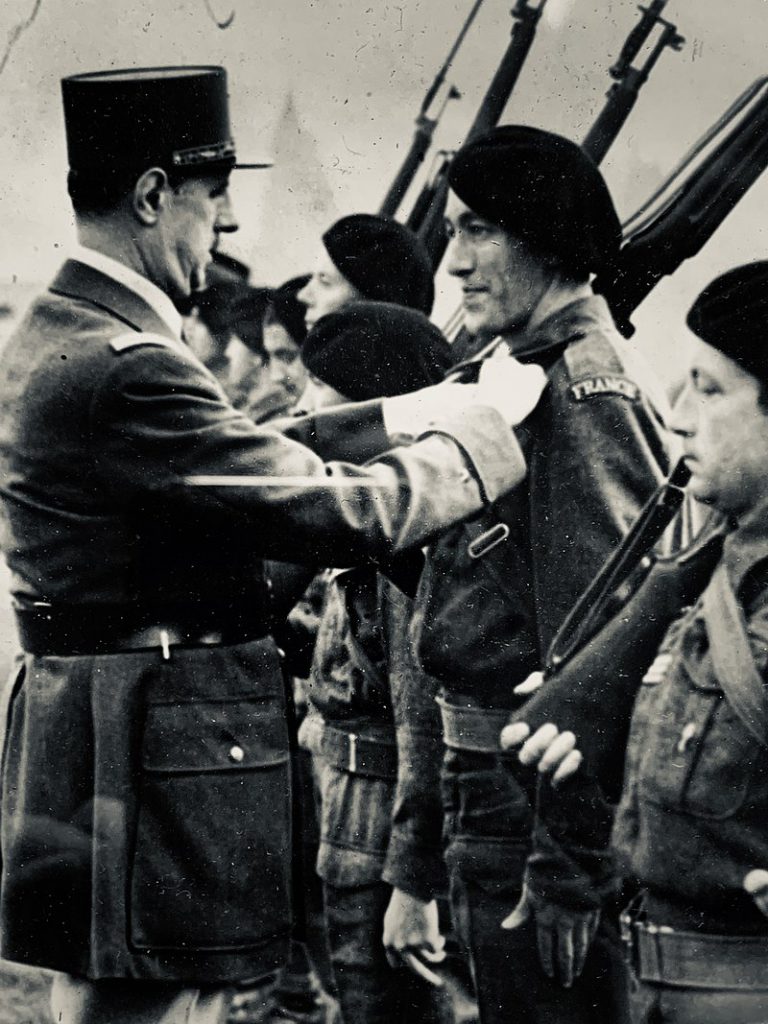
As for Déricourt, on the last day of April, a disturbing letter from the Free French arrived on Captain Beaumont’s desk at MI5. Beaumont was E1A, responsible for Control of Aliens from France (see Déricourt’s Double Act), and must have been astonished to read a missive dated December 7, 1942, from Captain Vaudreuil, Chief of French Counter-Espionage, addressed to Major Younger, the assistant to the head of E1, Brooke-Booth. (I had erroneously stated, in my November 2021 report, that the letter had been weeded from the archive, but it can in fact be located in KV 2/1131/3, at 24b). Beaumont sent a copy of the report to Flight Lieutenant Park at SOE, with the following message:
I enclose a copy of a report on your agent DERICOURT, which has reached us from the French. Unfortunately, there has been considerable delay in it coming to me. However, I think you should have the information, especially as the source is entirely different from the report about which I told you in my letter of 21st January 1943.
The puzzle of the delay, and of Beaumont’s reaction to it, is more bewildering when the text is studied. Vaudreuil’s text runs as follows (my translation):
I confirm for you the information given orally to Captain Beaumont on the 5th of this month. One of his long-time friends from before the war, who met him several times in London, informs us as follows:
Since the armistice in France, DERICOURT has started to frequent German locales in Paris. Afterwards he was often seen in Toulouse, visiting ladies of easy virtue in the pay of the Germans. DERICOURT now claims he will be returning to France in a few days on behalf of a British service, something that appears dangerous to us. On the other hand, he has asked our informant, an officer of the F.A.F.C., whether he could get hold of buttons [‘boutons’: ‘wireless knobs’?], compasses and other objects of that type, something that was of course refused him.
Park replied on May 7, simply thanking Beaumont and noting the contents of Vaudreuil’s report.
Several questions remain. What caused the delay in the delivery of the letter? Did Younger or Beaumont conceal it? Why did Beaumont not respond to the oral advice he was given? Did Beaumont explore what had caused the delay? Was the letter ‘discovered’ only because Déricourt had returned to London, and had been seen? Was Beaumont’s protestation of surprise to Park genuine? When did Beaumont learn that Déricourt was working for SOE, since on January 21 he had informed Park that the agent was leaving on a mission to America? Did Park enlighten him then? Why was Park’s reaction so cool and incurious? All is speculation.
Thus April ended in disarray. Churchill was in a world of his own, but his authority held sway. The Chiefs of Staff did not have the attention span to focus on what directives it had given to SOE, and fumbled the ball. General Morgan appeared not to be paying attention to the details, and the US Chiefs of Staff were also oddly careless. Charles Hambro surely had no idea what was happening in the bowels of SOE, especially in Section F, where Déricourt’s reliability was coming under broader inspection. And the shipments of arms to France, where the Resistance was expecting an early arrival of Allied troops, were increasing in contravention of declared strategy.
2. May: The TRIDENT Conference
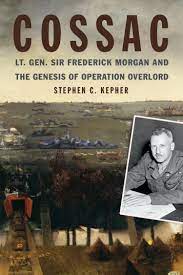
General Morgan started the month off by issuing a rather bizarre report to the as yet unappointed Supreme Allied Commander. He began by informing his boss that, after a meeting of his Principal Staff Officers on May 1, when an outline deception plan was discussed, ‘detailed examination of this plan is now in progress’, indirectly indicating that it was Bevan’s plan that his staff were inspecting. Yet he then makes a puzzling reference to WWI:
Examination of that portion of my Directive which deals with the preparation for “A return to the Continent in the event of a German disintegration” shows that it is necessary to ask for certain amplification thereof.
Recollecting the events of 1918 it is conceivable that, in the circumstances mentioned, my major object, the defeat of the German resisting [? not clear] forces, will have been in great measure achieved before the “return” from the N.W. begins. In this event the battle of the beaches [?] may be sharp and short and our forces will be available at once for the next step.
What Morgan seems to be requesting is clarification of the notorious paragraph 5 (b) about ‘German disintegration’, although he presents it in rather oblique and unmilitary language. “I suggest that it is desirable that some military objective should be designated now for attainment immediately after the cracking and penetration of the coastal thrust.” In this regard, he seems at this stage to be judging the chances of ‘German disintegration’ to be much higher than the Chiefs of Staff probably assessed them.
In his memoir Overture to Overlord Morgan carefully and tactfully dissected the dilemmas of the multiple objectives, and explained his reference to 1918, where ‘disintegration’ had occurred in a few short months. He pointed out the paradox of having as a goal ‘the defeat of German forces in north-west Europe’ alone, without indicating the objective of securing the total surrender of the Wehrmacht. He identified the challenge of not knowing what territorial goals should be set, in view of the speculation about what progress the Soviets would have made in 1944. He drew attention to the short amount of time available for any exercise, whether operational or deceptive, before the ‘invasion season’ closed in September. And he did point out that the eventuality of the disintegration (‘should the Germans begin to wilt’) ‘looked depressingly unlikely at that time’. What Morgan did not draw attention to, however, was the contradictions inherent in the objective of boosting German forces in north-west Europe in 1943 as a method of diverting them from the Russian Front, and the hypothesis about ‘disintegration’. I cite two of his most important observations in full:
It soon appeared that the three plans required were merely in fact three facets of the same plan. For it was of vital importance that nothing should be done in the course of diversionary operations in 1943 that should in anyway react to the detriment of the invasion plan for 1944.
In the first place the diversionary operation for 1943, if it was to deceive anyone, must in fact culminate at a time at which cross-channel operations on a big scale would be practically possible.
The long and the short of it was that Morgan’s process was very much one of trial and error. “In the event, of course, the usual compromise was reached and the whole affair was thrashed backwards and forward many times,” he wrote. Soon, the pressures of time would impose a very tight and disciplined approach.
On the night of May 5/6, Déricourt returned to France after completing his ‘discussions’. He was ‘parachuted blind near Mer on the Loire’ (Suttill fils). Soon thereafter, he arranged for Suttill himself (PROSPER, the eponymous leader of the circuit) to be picked up and flown to England, on May 13/14. Suttill was the only passenger, but crossed with Madame Besnard, who had just undergone training, and was to become Déricourt’s courier and cut-out (i.e. third-party contact) in Paris.
What had Déricourt achieved in London, if re-training had been a cover? The only account of any substance comes from Déricourt himself, as he described it to Jean Overton Fuller, and recorded in her book Double Webs. His is not a reliable story, however: he admits that at his military trial in 1948 he lied about the timing and manner of his recruitment by the Sicherheitsdienst, and he vigorously denies that he was agent BOE.48 (who was ‘another GILBERT’). Yet his description of his time in Britain in April-May 1943 is probably accurate, since it is implicitly confirmed by the testimony of Nicolas Bodington, Maurice Buckmaster’s second-in-command. Déricourt stated that he had been authorized to maintain contact with the Germans, not by the French Section, but by ‘another organisation in London’, which can only mean SIS (MI6). Déricourt went on to say:
It was not by the ‘French Section’ that I was authorized, but it was by London all the same. Some of my chiefs were for me, others against me. London at one moment did not trust me. I was not really authorized, for a moment, because the whole thing had got too big and too desperate. For a time I had to carry on without being really authorized, but I succeeded and then everybody was on my side.
For some reason, Fuller did not follow up on what Déricourt’s ‘success’ had been, although she did later charge him with handing over mail entrusted to him by Suttill and his assistant Gilbert Norman (ARCHAMBAULT), and thus being responsible for their arrest – a topic I shall cover in a later posting. Yet, according to his account, he carried out a project that caused ‘everybody’ to overcome their objections or hesitations. He also told Fuller several significant items. First, he claimed that that he had informed SIS that Buckmaster’s French Section F had been penetrated ‘at a very early stage’. By this he must surely have meant Bodington, who knew Boemelburg before the war, and was recruited by SOE in 1940, even before Buckmaster took over. Second, he confirmed that the nucleus of the PROSPER network had been penetrated even before Suttill arrived on the scene (referring indirectly to the contamination from the CARTE circuit). Third, he declared his respect for Colin Gubbins, pointing to the fact that he had met him, not just casually, but he also said that the ‘manœuvre’ for which he had been credited did not originate within SOE.
That Gubbins, but not Buckmaster or Vera Atkins, knew what was going on appears to be confirmed by what the two officers told Robert Marshall in the mid-1980s. In All The King’s Men, Marshall relates how Atkins, who had claimed that she was suspicious of Déricourt when she first met him, had changed her opinion. He writes:
Vera Atkins, one of the few F Section officers who saw Déricourt during that trip, lunched with him at a little restaurant in Soho. By this time she had come round to the view Buckmaster and others had shared from the start; that Déricourt was an exceptional asset to the section. Her only reservation was that during the course of their meal she was alarmed that he spoke, with scant regard for security, about people he’d just left in Paris. Atkins cautioned him to keep his voice down, but he ignored her. Though he talked freely about PROSPER and the others, he naturally never mentioned that the network was seriously comprised and in mortal danger. Nor in any conversation with Buckmaster did he mention anything that might have given cause for concern.
One would conclude from this narrative that speaking loudly was part of Déricourt’s cover, but it is also evident that he withheld the details of his exchanges with Dansey from Buckmaster and Atkins. Thus claiming that ‘everybody was on my side’ was clearly spurious. Yet Déricourt went on to suggest to Fuller that, since the PROSPER network had already been penetrated, it was probably sacrificed ‘to keep the Germans occupied’, ‘to distract their attention’, words that eerily echo the charter recently handed down to SOE.
In the middle of May, soon after Déricourt had returned to France, some of the senior officers at SOE were told that PROSPER had been compromised. This evidence is again oral, and derives from what Gubbins’s deputy, Harry Sporborg, told Robert Marshall in March 1982. The news, so Sporborg said, came from MI6, a ‘usually reliable source’, since it had provided such information to SOE before. Apparently, it was so confidential that inside SOE only Gubbins, his deputy Sporborg, the Director of Intelligence, Archie Boyle, ‘and perhaps one or two other senior officers’ were in on the secret – the clear intimation being that no one in F Section knew about it. Yet Marshall neglects to point out that the source was probably Déricourt himself, since the Frenchman had later declared to Fuller that the allegation was part of his report to MI6.
And then Marshall presents, without additional commentary, a very controversial statement:
The only reason anyone in SOE was informed at all was because a decision had been taken to exploit PROSPER’s situation and this would require a certain amount of co-operation from SOE itself.
Is this not shocking? That an external decision had been taken affecting the integrity and credibility of SOE without Hambro and Gubbins being informed by their bosses, instead of which they heard it from their hostile brethren in intelligence, MI6? It is beyond belief. Sporborg must have been dissembling, although very clumsily. Hambro and Gubbins were surely in on the decision already, and it is difficult to imagine such a super-ministerial decision (i.e. across the Foreign Office and the Ministry of Economic Warfare) coming from anyone except Churchill.
The very same day on which Déricourt returned to France, May 5, Churchill and a large party, including the three Chiefs of Staff, left on the Queen Mary to go to Washington for the TRIDENT talks, described by Reynolds and Pechatnov as ‘a particularly fraught Anglo-American conference’. The parleys occupied the remainder of the month, and Brooke and Churchill, after a sojourn in Gibraltar and North Africa, did not return to the UK mainland until early June.
In a way, TRIDENT was the USA’s home fixture after they had been outwitted at Casablanca, and they were now better prepared. It was as if none of the CASABLANCA decisions (and the ensuing deception plans) had been ratified, with renewed American demands for an early re-entry into France, as well as strong promotion of a swing towards the Pacific. Brooke considered that the Americans simply did not understand what the purpose of the Allied actions in the Mediterranean was about, with King, Marshall and Leahy being particularly obtuse. Yet Churchill, with his continuous impulsive changes of mind, and willingness to appease Roosevelt and his friends, was of little help, either. “Winston’s attitude at the White House Conference was tragic”, noted Brooke, even in the cold light of day, as his diaries were being prepared for publication.
While TRIDENT was underway, Bevan continued (in ignorance of what was going on across the ocean) to inspect the details of real operations in order to form his deception plan. He had had a meeting with Morgan on May 5, and wrote a memorandum on May 10 that highlighted the calendar challenges of the proposed attacks against the Pas de Calais and French Atlantic ports in September. September was too late, but there would not be enough landing-craft available before then. He concluded his minute:
Though it seems impossible to advance the dates of General Morgan’s Deception Plans, I am, however, doing everything possible to convey the impression to the enemy that we intend to undertake operations against the Continent in the summer or early autumn, though I fear that there is not much hope of success in this connection until signs of preparations are actually visible to enemy air reconnaissance.
‘Doing everything possible’? What direct avenues did Bevan have outside his TWIST committee? The PWE and the BBC perhaps: Lionel Hale was a member of his Committee.
In his address in Washington on May 12, Churchill picked up the question of possible German ‘disintegration’. Even though only one United States division was so far available in England (the minutes stated), ‘. . . plans were being made for an operation to provoke an air battle, and we were standing ready to exploit a German collapse should this by any chance take place. He wished to make it absolutely clear that His Majesty’s Government earnestly desired to undertake a full-scale invasion of the Continent from the United Kingdom as soon as possible.” Yet Roosevelt appeared to dismiss any forays in 1943. While preparations for BOLERO should begin at once, “He felt that all agreed that no ‘ROUNDUP or ’SLEDGEHAMMER’ was possible of accomplishment this year, but if one or the other were to be mounted in the Spring of 1944, preparations should begin now.” He did, however, question the taking of Italy, adding, rather elliptically, and with a lack of strategic insight, that ‘the most effective way of forcing Germany to fight (and thus taking weight off Russia) was by carrying-out a cross-channel operation’. If the objective were to help Russia, how would a cross-Channel operation in 1944 contribute to that goal?
Churchill would not give up. On May 19 (at the Third Meeting), he elicited an admission from Brooke that, after a meeting of the Combined Chiefs of Staff earlier that day, ‘an agreement which provided for a build-up in England of a sufficient force to secure a bridgehead on the Continent from which further offensive operations could be carried out’. That bridgehead again – but no dates, no details, except for the fact that nine divisions would be available in the initial assault.
Had Brooke caved in under pressure? Elsewhere in the proceedings he had stated (at a Combined Chiefs of Staff meeting on May 13) that ‘only by continuing in the Mediterranean could we achieve the maximum diversion of German forces from Russia’, and added that a lodgement in Brest peninsula would not be a decisive blow, as there were not enough forces to debouch into the Continent. Implicitly and correctly contradicting Roosevelt’s assertion, he stated that now was the time when action was required to relieve the pressure on Russia, and that was through the incursions in the Mediterranean, and taking Italy out of the conflict. The minutes of the background meetings of the Combined Chiefs of Staff show admirals, generals and air marshals continually going round in circles on these matters, and at this stage Brooke more realistically pointed out that a bridgehead would probably be expelled by a concentration of Wehrmacht forces. The bewilderment was noted by William Manchester, a Churchill biographer, who wrote:
The date agreed upon was May 1, 1944. But whether this was to be the small-scale landing, Sledgehammer, or the larger investment, Roundup, was not decided. So much confusion attached to just what exactly these code names meant that at the State Department and around Eisenhower’s headquarters, the newly proposed operation was referred to as Roundhammer. Whatever they chose to call it, it meant that yet another pledge made at Casablanca, and the most important to Stalin – to put men somewhere into France by August 1943 – would go begging for another year.
The Prime Minister was nevertheless able to express some satisfaction after this session.
The Prime Minister indicated his pleasure that the conference was progressing as well as it was, and also that a cross-Channel operation had finally been agreed upon. He had always been in favor of such an operation and had to submit its delay in the past for reasons beyond control of the United Nations. He said that he thought Premier Stalin would be disappointed at not having an invasion of Northern France in 1943, but was certain that Mr. Stalin would be gratified by the results from ’HUSKY’ and the further events that were to take place this year.
Some magisterial and sophistical twaddle, in other words.
Roosevelt and Churchill still had to break the news to Stalin, who was still under the illusion that the ‘second front’ would be opened in 1943. May had in fact been dominated by other matters; the Nazis had discovered the mass graves of Polish officers at Katyn, and pointed clearly at Soviet responsibility. The outrage from the Polish government-in-exile prompted Stalin shabbily to break off political relations with the Poles, and Churchill and Roosevelt cravenly appeased the Soviet dictator. Yet Stalin appeared not to be too perturbed by the cessation of the Arctic convoys. After TRIDENT, on June 2, Roosevelt sent, under his and Churchill’s name, a letter (with a text drafted by General George Marshall) that coolly stated that ‘the concentration of forces and landing equipment in the British Isles should proceed at a rate to permit a full-scale invasion of the Continent to be launched at the peak of the great air offensive in the Spring of 1944.’ They then sat back and nervously awaited Stalin’s response.
Yet Stalin had already received inside information about the discussions between Churchill and Roosevelt in Washington, maybe from an ancillary meeting. The VENONA transcripts reveal that a cover-name of ‘Source No. 19.’ was reported in a KGB to Moscow message (812), dated May 29, to have participated in a private conversation about the second front. The text of the message has been only partially deciphered, but Haynes and Klehr write in Venona: Decoding Soviet Espionage in America:
It is clear, however, that Source No. 19 reported Churchill’s views that an Anglo-American invasion of continental Europe in 1943 was inadvisable. The message also reported that Zamestitel supported a second front and that it appeared that Roosevelt had been keeping Zamestitel in the dark about “important military decisions”.
Neither Zamestitel [‘deputy’] nor Source No. 19 has been confidently identified. Eduard Mark made the case that Source No. 19 was probably Harry Hopkins, Roosevelt’s Special Assistant (see https://www.tandfonline.com/doi/abs/10.1080/02684529808432474). Hayes and Klehr suggest he may have been British. (But a British spy temporarily in Washington would not have had quick access to his controller.) In any case, Stalin learned about the opinions of his Allies before they constructed their written statement to him.
Thus May drew to a close. MI5 and the XX Committee were still very muted in ‘double-agent’ activities, although, on the last day of the month, Guy Liddell (who had been on sick leave with jaundice) reported a startling success with GARBO and the codes that the Abwehr had given him. John Curry, Liddell’s incisive critic of techniques for vetting dubious arrivals, had been moved over to MI6 to lead its embryonic Soviet counter-espionage section. Stalin had recently announced the dissolution of the Comintern, but Liddell & Co. treated it as an empty gesture. Arms shipments were increasing in France, and agents there were expecting an imminent invasion, but the Chiefs of Staff were still dithering over what were tentative operations, and what were feints. Churchill was still haunted by the promises he had made to Stalin.
3: May-June: PROSPER is Summoned
While these debates were going on in Washington, Francis Suttill (PROSPER) returned to London. Yet the recall of PROSPER and his eventual return to France represent one of the most problematic episodes in this story, and merit a dedicated chapter.

Buckmaster’s Stories
The current conventional account, published by the officer’s son, Francis J. Suttill, in Prosper, and endorsed by several commentators, is that he arrived on May 14, 1943, and stayed in England for about a week. The documentary evidence for this sojourn is however scanty: no record of it appears in Suttill’s personal file at the National Archives, and we thus have to rely on a miscellany of less-than-reliable inputs – what Suttill himself said, what Maurice Buckmaster wrote and spoke, what the Foreign Office SOE Adviser fed M. R. D. Foot, what contemporaries told E. H. Cookridge and Robert Marshall, and what Suttill’s son has collated from a close inspection of air force records and his own family records. The combined story does not make sense.
One of the major conundrums is that, for almost forty years, an account that had Suttill returning on June 10 (or 12) was echoed in several publications, including the authorized history by Foot. Nobody ever challenged this assertion until Foot himself, in the 2004 edition of his SOE in France, slyly replaced his statement about a June 10 return to France with one that stated ‘late May’. He did not explain why he made this change. I thus employ my familiar methodology of working serially through the accounts in chronological order, and testing the claims against other evidence. The problems, however, are not just with the dates themselves, but with the reasons for Suttill’s recall, and how he spent his time in England.
I start with the two books by Maurice Buckmaster, Suttill’s boss, the head of F Section, who contributed much to the confusion. In Specially Employed (1952), he wrote (p 186):
His decision was final, and, when he [Prosper] was established at the beginning of 1943, arms and munitions began to flow to the different groups in a satisfactory manner . . .
As early as April 1943, the rumour ran like wildfire that the Allies were about to land in France. The patriotic surge of enthusiasm was dangerous. It had to be quelled. Prosper did not know whether the rumour was founded in fact or not. For reasons of security, we could not tell him by radio. We decided that we must bring Prosper back to London. . . . .
His detailed report was extremely encouraging. It was clear that the Allies, when they landed, would be assured of magnificent support from French patriots. But the Allies were not ready to return to the Continent in the summer of 1943, as so many Frenchmen confidently hoped. The fires of enthusiasm would have to be damped down, without, however, being extinguished. Only a first-class man like Prosper could convey that message successfully. Prosper would have to return as soon as possible.
Indeed, after a week in England, he was begging to let him pursue his mission, for he realized that each day’s delay was dangerous. Within ten days he was back in Paris, on 20 June, 1943.
The overall message from this version is clear: the details are haphazard. Contrary to Buckmaster’s own in-house History of F Section, PROSPER is correctly indicated as becoming active only at the end of 1942. The increase in arms shipments appears to coincide with PROSPER’s establishment and activity. But Buckmaster strikes a very disingenuous pose over the spread of rumours about the coming invasion, as those signals were issued to agents by Buckmaster himself. PROSPER’s new mission is described as indeed being to quash such enthusiasms, suggesting, perhaps, that the March directive to SOE about the switch in emphasis from France to the Balkans, and from patriot armies to sabotage, had reached Buckmaster. Buckmaster’s narrative suggests that it was around June 10, towards the end of his sojourn, when Suttill insisted on returning, after he had been in London for about a week, which would establish a date of, say, June 3, for his arrival. Yet that ‘within ten days’ is not precise. The following ‘moon-period’ started on June 10, so he could have left then, or soon after, and gradually made his way to Paris.
After the passage of a few years, in They Fought Alone (1958), Buckmaster wrote (pp 185-186):
In the middle of 1943 we had a top secret message telling us that D-day might be closer than we thought. This message had been tied up with international politics on a level far above our knowledge and we, of course, had acted upon it without question. In the event, it had not come true and, as everyone knows, our friends in France – and the whole world – had to wait another year before the liberation began. Nevertheless it was from the reception of this message that a certain change in our objectives can be dated. From the middle of ’43 we were specializing much more in the planting of arms dumps and the training of a secret army than we had up till then: earlier we had concentrated on sabotage and ‘economic warfare’ – attacks on key targets in accordance with directives from the Ministry of Economic Warfare.
Now we attempted to serve two masters, the M.E.W. to whom we were technically responsible, and Supreme Headquarters Allied Expeditionary Force (SHAEF), newly come into existence, with whom we were strategically linked. The pace increased. And this increased pace was, to some extent responsible for the flurry of arrests which, in some areas, temporarily dislocated the French Section of S.O.E. It was much easier to indulge in sporadic sabotage and get away with it than it was to organize large clandestine armies without allowing a single weak link to infiltrate a section and betray his comrades. . . .
When the time came for the change over from economic warfare to planning for D-Day, the necessary re-thinking was so sweeping that we decided the best thing would be to bring Proper over to England for his new briefing . . . We had many conferences with Allied high-ups and then, a fortnight later, Francis returned to France . . ..
I cannot feel now that I was wrong to leave him in Paris, bitterly though I regret that I did not pull him out in that May of 1943.
Why the 180° turn? Now Buckmaster is passing on to PROSPER the mission of contributing to the coming Allied re-entry. He alludes to the increase in arms dumps in the summer of 1943, a phenomenon which was strictly in contravention of the March Directive to SOE. The vagueness about dates is, however, very telling. He states that he wishes he had pulled Suttill out in May – which must be interpreted as saying that Suttill had arrived in England in that month – and could have been kept there for the duration. ‘The middle of 1943’ is when these ‘top secret’ messages arrived (why would such messages be any more confidential than anything else?), yet by the summer, the plans for any operation in France were for deception purposes, even though the hope for a re-entry was still nurtured by Churchill, mainly, in the vain prospect of ‘German disintegration’. Certainly no change of policy had been made by the Chiefs of Staff that would warrant such instructions – unless of, course, SOE was being sucked into the deception, too.
Tales of Betrayal
What had happened was that, in the late nineteen-fifties, the books written by Jean Overton Fuller, Heinrich Bleicher and others had aired the very probable notion that the networks had been penetrated and betrayed (as Buckmaster acknowledges above, and in the lines directly after what I have quoted). So, in 1958, Buckmaster had to mask SOE’s incompetence by introducing SHAEF (Supreme Headquarters Allied Expeditionary Forces), and orders from high command. Yet SHAEF was not created until the end of 1943. It replaced COSSAC, which itself had hardly got started in May 1943 – the month that Buckmaster identifies as the time when he could have extracted Suttill from his doom. This date also explicitly contradicted Buckmaster’s timetable from 1952. Thus he apparently tried to blame the spate of arrests on the increased subversive activity ordered by higher government agencies. It is overall a very shabby affair.
Yet confusion remains about the exact period of Suttill’s stay in London. For a while, Buckmaster’s 1952 ambiguous assertions for early June were the baseline. In Double Webs (1958), Jean Overton Fuller confidently wrote that Suttill left for London under Déricourt’s guidance on June 10, and returned to France on June 20, to Culioli’s reception. She thus offered the first variation to Buckmaster’s story, perhaps misreading Buckmaster’s ‘within ten days’. On the other hand, E. H. Cookridge, in his Inside SOE (1966), which was published just before Foot’s authorized history, had a breathtaking alternative, presenting Suttill as arriving on May 14/15, and not returning until June 12. That would have been a long time for a recall dedicated to ‘consultative talks’, but the bookends have substance.
Cookridge described Suttill’s visit to London in terms of an opportunity for him to express to his bosses in SOE his concern that the PROSPER network had been infiltrated, and he reported several arrests that had taken place in April and May. One of the setbacks that had upset him (as recorded by Cookridge) was the arrest of Edward Wilkinson (ALEXANDRE) – but Wilkinson was not arrested until June 6, a fact that would indicate that Suttill must have expressed his concerns after that date, and was probably in London at the time. Moreover, Suttill may not have told his bosses about his efforts to bribe the Sicherheitsdienst in an attempt to rescue Germaine and Madeleine Tambour. The former had probably been betrayed by the traitor Roger Bardet, and had been arrested on April 22. Suttill was indeed instructed to try to rescue them, but he inserted himself into the affair in a reckless manner, and was eventually duped by the Germans. Also, while he was away, two members of the Abwehr, claiming to be escapees from Holland seeking the route to the UK, and impersonating known SOE agents, infiltrated themselves into Suttill’s network. Cookridge wrote (p 225)
It cannot be verified whether Suttill suspected ‘Gilbert’ [i.e. Déricourt] of double dealing. Nor is it certain whether he was told in London that British Intelligence chiefs had knowledge of ‘Gilbert’s’ contacts with the Germans. But I know that after his return to France on 13 June 1943 Major Suttill told his friends that ‘someone who enjoyed his trust must be a double agent’. Surviving members of Suttill’s network, such as Madame Guépin, Madame Balachowsky and Armel Guerne, have confirmed my belief that this was Suttill’s feeling.
The Authorized History
In the first edition of SOE in France (1966, with second revised impression, 1968), M. R. D. Foot had Suttill sent back to Paris ‘about June 12 with an “alert” signal, warning the whole circuit to stand by’, ascribing the details to an interrogation of Cohen on October 11, 1943. (This must be Gaston Cohen, ‘WATCHMAKER’: he was being interrogated about Suttill’s participation in the mismanaged affair of the Tambour sisters.) Yet it is not clear whether Foot derived the facts about the alert and the date from Cohen, or took the date from the same source who provided Cookridge with his information. For some strange reason, Gaston Cohen’s Personal File is not listed in the National Archives, and thus the facts of his ‘interrogation’ are not verifiable. (I have asked the chief independent collector of SOE information, Dr Stephen Kippax, a stalwart of the Special Forces Club, for a transcript of the interrogation, but he has not seen it, although he said that it has probably been shown to Francis J. Suttill – only.)
For almost forty years, however, this statement lay unchallenged and unquestioned: no apparent anomalies or counterfactual evidence were presented. And yet what is remarkable is the fact that the Foreign Officer adviser, Edwin Boxshall, in the Chronology he prepared for Foot, did record Suttill’s departure as occurring on May 20. His report was released in 2006, two years after the new edition of SOE in France, but it had been prepared as far back as 1960. Why had Foot ignored or rejected this datum for so long?
In 2004 a bizarre amendment to Foot’s text appeared. In the new edition of SOE in France Foot was moved to correct the date of Suttill’s return to France to ‘late May’, but left the sentence otherwise unchanged. Foot declined to offer any reason for his alteration, yet by making no other changes he suggested that the interrogation of Cohen was still the source. That was not good scholarship. Foot had a new paragraph to insert, however, which ran as follows:
There is a long-standing rumour that he had had a personal interview with Churchill, who gave him a misleading brief on purpose; this is baseless, as a look at the dates make clear. While Suttill was in England in May 1943, Churchill was not; they cannot have met.
Such logic is, at best, sophistical. It would appear that Foot arbitrarily changed the dates. It is true that Churchill did not return from his Washington/Mediterranean journey until June 5. Yet for decades Foot was quite happy to have his record state that Suttill was in London in early June. He credits his fresh insight in an Endnote: “I owe this simple point to Suttill’s son and namesake, properly jealous of his father’s memory.” But the point is by no means simple, and the method is devious. The fact of the date collision would have voided the story of the Churchill encounter, but would not have warranted reconstructing the timetable. The date was changed to fit the politically correct story.
Robert Marshall & Fresh Challenges
What had happened in the interim? The main event was the furore caused by the publication of Robert Marshall’s All The King’s Men in 1988. Marshall embellished the story of the Churchill encounter in his book (pp 158-164), where he actually reported that it was Bevan and the London Controlling Section that decided to recall Suttill, and that Churchill himself even requested to see Suttill personally. He added flourishing details describing how Lord Selbourne [sic] and Suttill ‘rode in the back of a large staff car down Baker Street’ to see Churchill. The meeting is not dated, but Marshall recorded an important minute by COSSAC as occurring on May 28 ‘soon after Suttill’s return to London’ – again an unforced error.
. . . when Francis Suttill emerged from the CWR [Cabinet War Room] he was a changed man. He had been charged with what he believed was the greatest secret of the war – the date of the invasion. Unfortunately, the new rather knocked him sideways. He was told the invasion would take place at Pas-de-Calais, on the northern coast of France, sometime during the first week of September. More than three months away.
Marshall was unfortunately rather vague about dates. If indeed, the events he described were claimed to take place in May, his story falls apart. The main problem is that, as is evident, Churchill was indeed out of the country for almost all of May – alongside nearly all the top brass. As Alan Brooke wrote in his diary entry for May 5, as he travelled on the train from London to Greenock:
Our party consists of PM, Averell Harriman, Beaverbrook, Leathers, Charles Wilson, Cherwell, Wavell, Peirse, Somerville, 3 Chiefs of Staff, all Joint Planners and in addition shipping, movement, administrative, intelligence etc. staff officers from the Admiralty, WO and Air Ministry, and finally many clerks, detectives, etc.
In other words, the only significant relevant players left behind were Dansey, Bevan, Morgan, Hambro and Gubbins. As Brooke records, the major figures in the TRIDENT party arrived back in London on June 5.
Yet Marshall had an unexpected ally in Maurice Buckmaster himself, who was bold enough to express in a BBC programme, on October 31, 1985, the following startling revelation:
Churchill told Suttill he wanted to increase the amount of sabotage operations and general unrest in the west of France so he could have some defence against Stalin’s claim we weren’t doing enough to help him. Suttill was encouraged by Churchill to run enormous risks, to forget his security training and produce violent explosions in and around the Paris area, so that Churchill could turn to Stalin and say – now, look at what we’re doing.
This was an astonishing claim, and a fresh explosion from an insider against the carefully established ‘truth’ that the PROSPER circuit had not been sacrificed on purpose by Allied high-ups.
Marshall used this evidence to show that Suttill, when he returned to France, was ‘convinced the invasion was coming in September’. But when does he place Suttill’s return? He first describes the fateful rendezvous at Capucine’s restaurant in Paris on June 9, where Agazarian set up the fake Dutch SOE agent for a meeting with some members of Prosper’s circuit, an encounter which Déricourt was able to avoid, and then informs us:
Four days after the incident at Capucines, Francis Suttill prepared for his return to France. He was expected to return to one of Déricourt’s receptions, but instead chose to parachute to a reception in a field in the Sologne.
According to Marshall, Suttill apparently wanted to be met by Pierre Culioli, who had first welcomed him on his first flight to France, back in November 1942. On the night of June 11/12, however, a disaster had happened, when a container exploded. The Germans poured into the area the next day. Culioli tried to warn London, recommending they halt all air operations for a while, but his message never got through, and Culioli was informed that Suttill would be parachuted in on June 13/14. Suttill then briefed Culioli and his comrades about further drops, and the invasion in the autumn, and then moved to stay in Paris. Thus Marshall in fact echoed Cookridge – and Foot Mark 1 – concerning the timing of Suttill’s return to France. He was still in London in early June.
The Contribution by Suttill’s Son
Lastly, Francis J. Suttill, in Prosper (2018), published initially as Shadows in the Fog (2014), has Suttill being picked up on May 14/15 and returning five days later. As primary evidence of his father’s arrival and stay, he offers two pieces of evidence: his mother’s account of travelling up to London to see her husband, and Buckmaster’s diary entries. The arrival on May 14/15 seems solid. Hugh Verity in We Landed By Moonlight writes (albeit with some tentativeness): “We must have brought back to England one of Buckmaster’s best agents, Major Francis Suttill . . .” , and he adds that Suttill returned by parachute on May 20/21. Francis Suttill notes that his mother visited his father in London that week, and he also cites several items from Maurice Buckmaster’s diary from May 15 until May 20, Buckmaster apparently meeting Suttill every day. His father left with France Antelme (RENAUD) on May 20.
Yet an enormous paradox still remains. Suttill also quotes Buckmaster’s BBC interview (given as occurring in 1983), in which the SOE officer revisited his claim that Churchill had seen PROSPER during the latter’s visit. Suttill Jr. repeated Buckmaster’s statement that Churchill himself had wanted to meet Suttill, and continued as follows:
Buckmaster claimed that my father was closeted with Churchill and the Cabinet Office for a long time as Churchill explained that Stalin was bullying him into making more trouble in France. He claimed that Churchill then asked, ‘Are you prepared to risk your life in these circumstances? I want you to make as much disruption as possible. Ignore the security rules, stir things up.’ And that my father replied, Yes, sir’.
Buckmaster (as in the quotation above) naively represents Churchill’s commandment to Suttill as being one to increase sabotage activity, to please Stalin in the short term, not one to prepare the patriot armies to assist a summer invasion. Apart from a failure to point out that Stalin would not have been very impressed by the actions of a few saboteurs, or even spasmodic uprisings, Suttill’s lack of commentary is puzzling. He does not explore why he thinks Buckmaster delivered this story, and simply attempts to refute it by hammering home the point that the meeting could not have happened because of Churchill’s absence during that week. Yet, elsewhere, he ascribes Buckmaster’s misconceptions to a faulty memory. Defective memories, however, tend to distort details of actual events rather than invent Walter Mittyesque episodes completely. Moreover, if Buckmaster’s memory was impaired (and he was still in his fifties when he wrote his two books), one would think he would have considered consulting his diary to check the facts of the case before mounting his media platform. And did Suttill inspect Buckmaster’s diary for early June?
The SOE Adviser and the Register
What Suttill did have access to was the document prepared by Edwin Boxshall for M. R. D. Foot, to which I referred earlier. Unfortunately, the numbers of Suttill’s Endnotes are frequently wrong, but this is clearly what he describes as Chronicle of SOE Operations During World War II, and lists it as residing at the Imperial War Museum. The document is in fact titled Chronology of SOE Operations with the Resistance in France During World War II, and, a little alarmingly, its introduction states: ‘Originally produced in London, December 1960 by Lt. Col. E G Boxshall. Later manuscript amendments by Professor M. R. D. Foot, author of “SOE in France”’. Thus we have a highly selective compilation massaged for the benefit of the authorized historian, who himself sees fit to emend the text without leaving a paper-trail of the changes he made, and why. One of the remarkable features of this document is that Boxshall lists Suttill’s return to France as occurring on May 20/21, but a hand-written question mark – presumably one of the annotations made by Foot that the issuing civil servant acknowledged – has been added against the date. The authorized historian presumably took his intelligence from elsewhere, quixotically ignoring the advice from his Foreign Office mentor. Suttill never recognizes this anomaly, which is breathtaking.
Suttill found several mistakes in Boxshall’s text (and must have been amazed when he saw Boxshall’s original typescript), so he decided that ‘it would be wise to accept statements from this document only if they were supported by information from other sources’. And Suttill displayed considerable energy and thoroughness in examining not only the files that were eventually transferred to the National Archives, including the RAF records of flights undertaken on behalf of SOE, but also French records. His painstaking approach could have delivered a very valuable register of the air movements in 1943, but, sadly, what he has published is very confusing.
The first problem is one of nomenclature – not Suttill’s responsibility, of course, but something he does little to ameliorate. The PROSPER circuit was also known as PHYSICIAN, but leaders of a circuit were frequently identified by the network they led. Thus, when (say) ‘PHYSICIAN’ is listed, it sometimes refers to an Operation for the network (when a number follows the code), and sometimes to PHYSICIAN himself (with no suffix). If the operation was successful, the name appears in bold. Agents can be referred to by one of their many aliases. Another problem is the gaps in the record. In his book, Suttill states that the ATF Operational Instructions for May and June were missing, which would cast doubt on the reliability of the data. However, Mr. Suttill has also told me that his assertion in the book is in error, and that it is the June and July orders that are missing. How Suttill derived his register for June (the record stops on June 23/24) is not clear.
By adopting a very inconsistent method for identifying passengers, Suttill does not alleviate this confusion. His Key includes the following item: ‘1M/10C/1P = number of men, containers and packages dropped’. Apart from the fact that women were frequently among the personnel who landed, Suttill does not employ this coding consistently. For instance, for the critical INVENTOR pick-up and landing on May 14/15 (the codename for one of Déricourt’s operations), Suttill informs his readers that those who landed were ‘J. Aisner, V. Leigh, S. Jones and M. Clech’, and that F. Suttill was picked up, yet he provides no code of ‘4M’. For the operation on May 20/21, named CHESTNUT4, he lists PHYSICIAN and BRICKLAYER (France Antelme, the leader of the BRICKLAYER circuit, not identified here by Suttill: one has to go back to his original drop in November 1942 to find the equivalence) as completed, with two passengers noted (‘2M’), but he does not list who they were, the implication being that, since they both appear in bold without a suffix, they must have been the respective circuit-leaders. Yet for June 12/13, where his text indicates that WATCHMAKER (Cohen) was dropped, and he provides WATCHMAKER in bold, he merely notates ‘5C/2P’ (five containers, two packages) without listing any ‘Men’. One could imagine that Cohen might have been accompanied.
Even though Mr. Suttill has informed me that CHESTNUT4 was the flight on which his father returned, he cannot explain to me why he does not list his father’s name in this entry, nor why he does not list passengers comprehensively. His father’s name does not appear anywhere else.
PROSPER in France
Thus another avenue of research would be to trace PROSPER’s activities and movements in France during this controversial period of May 21 to June 12. The evidence is slender. Suttill introduces his ‘Disaster’ chapter, however, as follows:
One of the first things my father did on his return from London on 21 May was to visit Trotobas in Lille to pass on instructions. These confirmed that everyone was still anticipating an imminent invasion as the instructions are remembered as ‘Attack in June, July, August, as quickly as possible in view of the events which can take place at any moment’.
This journey has an ironic geographical aspect, as Lille is on the Belgian border, further away from Orléans, near where Suttill was dropped, than is Tangmere, the airport from which he left the previous night. He would presumably have had to catch a train to Paris, and then switch to another one for the journey to Lille, where he had to be very careful, as the region was much more heavily guarded, and he had relatives there. But PROSPER did have urgent business with Trotobas, and this witness statement seems reliable.
The second item is PROSPER’s presence in Paris. The file on WATCHMAKER, Edward Mountford Wilkinson (HS 9/1593-2), aliases ALEXANDRE or PRIVET (the name of his network), provides part of the answer. ALEXANDRE had been recruited by PROSPER, and operated out of Nantes, but frequently stayed in Paris with the Perraults (as Patrick Marnham describes in War in the Shadows). The Gestapo had visited him with questions on May 15, and on June 5 he had a meeting scheduled with Inspector Imart of the French Police, who had helped him escape after an arrest the previous year. Wilkinson was arrested the next day, and, after dreadful torture, was executed at Mauthausen in 1944.
Further evidence about WATCHMAKER comes from the interrogation on August 6, 1945, in London, of Armel Guerne (GASPARD, or TUERNE), who was suspected of having been a Gestapo agent. He was familiar with the TAMBOUR case, and his interrogation thus mirrored that of Gaston Cohen. His file (HS9-631/5) is revealing in several aspects. For instance, the report states very provocatively, in a Note: “PROSPER, during his visits [sic!] to London, left two letters to be delivered by the organization to his wife.” And one important factoid emerges when the interrogation turns to the arrest of ALEXANDRE:
‘ALEXANDRE’ had previously been arrested in the Unoccupied Zone but had escaped with the help of a French detective. He met PROSPER, ARCHAMBAUD [Gilbert Norman, PROSPER’s wireless operator] and GUERNE at GUERNE’s house and told them that the following day he was to meet in a French café the French detective who had helped him to escape. In spite of their warnings, ‘ALEXANDRE’ kept this appointment and was arrested by the Gestapo on a Sunday in June 1943 [actually June 6].
Thus PROSPER was clearly in Paris in early June. Yet Foot elides over the whole ALEXANDRE episode: evidence of PROSPER’s presence in Paris in early June would not fit with his initial chronology.
The last occasion, at the time when Suttill was originally reported as returning to France, is more controversial. Francis J. Suttill describes the events of June 10-13 as follows:
He [PROSPER] must have received Culioli’s request to suspend drops in the Sologne following the explosions at Neuvy on 10/11 June just before he went to Bazémont to receive Gaston Cohen on 12/13 June, as he went straight to meet Culioli afterwards. My father refused Culioli’s request as he had already told him that he did not want to waste time, feeling that the invasion was imminent, and he was so serious about this that he gave Culioli the order to continue with receptions in writing.
Suttill notes that the son of his father’s hosts at Avaray, Alain Brossard, remembered helping set up PROSPER’s receiver so that he could listen out for BBC messages. But Suttill’s analysis is tentative: ‘he must have received Culioili’s request’; he has no evidence so support it. He describes his father’s understanding of an imminent invasion as ‘feelings’, rather than fresh intelligence and instructions that PROSPER (according to other sources) had just been given.
Indeed Cookridge wrote, in Inside SOE (p 229, as I introduced above), that it was Culioli who received PROSPER:
On 13 June Culioli received Major Suttill, whose arrival had been announced by radio signals and in a ‘personal message’ on the BBC. Culioli expressed surprise that Suttill was dropped in the Sologne, despite his warnings; but Suttill did not offer any explanations.
Thus the WATCHMAKER/PHYSICIAN 42 flight on 12/13 June takes on a special significance, with two accounts of the same drop being in sharp contradiction. Patrick Marnham also presents the episode with the explosion as happening on June 12/13, and accompanies his analysis with some strong witness statements, and information from French archives at Blois. PROSPER could well have arrived the same night as the explosions occurred, and had his tense discussion with Culioli soon after he landed. Yet Marnham also lists Suttill’s Shadows in the Fog (the earlier edition of Prosper) as one of his sources, without drawing his readers’ attention to the clash in dates.
On closer inspection, Suttill’s account is flimsy. He makes the case that the drop with the explosions occurred on the night of June 10/11, explicitly contradicting the evidence of the abbé Guillaume by emphasizing the recollections of one Dr Segelle, who was nephew of one of the reception team. Segelle gives a superficially precise date ‘the Thursday before Pentecost, the 10th June, towards 1 a.m. in the morning’ in Suttill’s pleonastic translation: the ecclesiastical calendar is correct, but that morning would have been June 11. Suttill then embellishes his report with an assertion by Alain Bossard, with whose parents PROSPER stayed, that he helped PROSPER set up the aerial for his wireless receiver in the garden. PROSPER would not, however, have carried any wireless equipment with him; he had no reason to listen to the BBC in the middle of the night; in any case he could have used an ordinary domestic radio to tune in, had he needed to. (Suttill also has his father busily cycling to the train station ‘the next morning’ – presumably June 11.) Lastly, Suttill provides as a source for the account of the PHYSICIAN 54 explosion the file HS 8/143 at the National Archives. I have inspected the file: it contains nothing about the flights of June 1943.
In that case, Suttill’s tentative evidence that PROSPER was already in the neighbourhood could be seen as being devised to refute any account of his second return to France through the introduction of items that would appear to give verisimilitude, but that can be shown to be hollow. Mr. Suttill has declined to respond to my several questions about the facts surrounding this critical flight and PROSPER’s presence at the time of the PHYSICIAN 54 episode.
A Breakthrough Theory
So how should all this be interpreted? It occurs to this unreformed conspiracy theorist that the extension of Suttill’s spell in London until June 12 would assist the case of those who claim that he had an audience with Churchill, while the insistence on the earlier, late May, return would help the case of those who asserted that such an encounter would have been impossible. And what is still not explained is why Buckmaster, as early as 1952, when there was no pressure on him from published accounts of betrayal, would be so open and confident (and wrong) about the date of the June return to France.
The inescapable conclusion for this researcher is that Suttill crossed the English Channel four times that summer. His first sojourn was May 10 to 14/15; the second was June 10 (probably) to June 12/13. Only in this scenario can all the contradictory claims be reconciled. Foot picked up the same information as Cookridge and Marshall, and did not trust what Boxshall had written, as it contradicted what he was being told by others. Boxshall tried to guide Foot to the first return on May 14/15, probably having been instructed to bury any evidence about a second visit to meet Churchill. Yet Foot could not bring himself, out of some misguided loyalty, to declare openly what happened in the face of the fresh evidence that emerged from the archives. And then, many years later, he started receiving pressure from the Suttill camp of ‘anti-conspiracy-theorists’ (including the SOE ‘historian’, Mark Seaman) who wanted to submerge the whole notion that Suttill may have received dangerously false information from Churchill about an imminent invasion.
The evidence is rich:
i) Guerne’s file refers to multiple returns that PROSPER made to the UK in 1943.
ii) PROSPER surely accompanied Cohen on his second return to France. The report of Cohen’s interrogation has been withheld; Cohen’s personal file likewise. They are too volatile, as Cohen presumably gave evidence of his flight with PROSPER.
iii) The personal testimonies given to Cookridge and Marshall all indicate that PROSPER had a meeting with Churchill, which could not have occurred until after the Prime Minister’s return to the UK on June 5.
iv) Foot maintained for thirty-eight years that PROSPER did not return to France until June 12, based on the information from Cohen’s interrogation report.
v) PROSPER was reported to have expressed concern about Wilkinson’s arrest. That happened on June 6, so PROSPER must have spoken to his bosses at SOE after that date.
vi) The evidence for PROSPER’s initial return to France on May 14/15 is practically irrefutable. The error has been in Suttill’s and Foot’s insistence that it was his final journey to the UK.
vii) PROSPER was certainly active in France (with Trotobas, Wilkinson and Guerne) in the last week of May and the first week of June.
viii) Foot elides over this whole period, including the archival evidence on Wilkinson. (His Footnote No. 89 on page 494 of SOE in France, referring to Guerne, gives only the single digit ‘9’ as a reference.)
ix) Francis J. Suttill’s primary evidence for PROSPER’s presence in the Sologne on the night of June 10/11 is highly dubious, and contradicts the memories of other witnesses to the events (such as the abbé Guillaume), as supplied by Cookridge, Marnham, and even Suttill himself.
The theory must be accompanied by some assumptions. First of all, PROSPER must have been picked up by a flight that was ‘under the radar’. (He could conceivably have made his second passage to the UK by sea, but that would have been a long and dangerous journey, and inappropriate given the urgency.) The flight was probably not even made by 161 Squadron, which was responsible for landings, but arranged secretly by Churchill. As Marshall reported, Churchill had asked to see Suttill personally, and the Prime Minister presumably ordered the SOE officer’s recall when he found out that Suttill had been in London while he was overseas. When the Foreign Office engaged Foot to write the history, and started releasing records, they could not have been aware of the controversy that would be aroused by indications that Suttill had not returned until about June 12. Records of Suttill’s movements were surely concealed or destroyed. When former SOE members started talking to Cookridge, and Foot himself, the Foreign Office instructed Boxshall to list only Suttill’s first flight, and omit details of the second excursion. Foot questioned that account, however, knowing that Boxshall’s summary did not tell the whole story, but he was persuaded not to reveal all because of the extreme sensitivity of the revelations. In his text, however, Foot perpetuated the date of the second arrival. If the censors noticed the anomaly, they said nothing, observing that Cookridge (in particular) had arrived at a substantially correct assessment of the facts. They presumably hoped that no one would notice. They were right: Foot’s account lay unchallenged for over thirty-five years.
What I have hypothesized has the advantage of accommodating all the published facts about Suttill’s movements, except for those that understandably present minor errors in details over dates. It should receive objections only from those commentators who i) assert that Suttill’s sole visit to the UK was between May 14/15 and May 20/22; or ii) maintain that Suttill arrived on May 15 but did not depart until June 12 (or near that date). I introduced this theory to Patrick Marnham earlier this month, and he informed me that he had been thinking along similar lines. My last set of questions to Francis J. Suttill has remained unanswered, although I hinted to him the path I was pursuing. Steven Kippax has similarly gone silent. That is intelligence in itself. A full analysis of the implications of these conclusions will have to come in a later posting.
(Latest Commonplace entries can be seen here.)

